
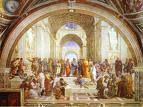






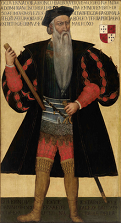



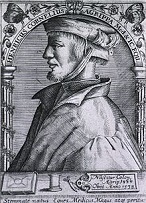


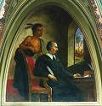
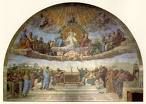
1510 On Jan. 17 the Polish-Moldavian Peace Treaty is signed, and prince (since 1504) Bogdan III the One-Eyed (1470-1517) of Moldavia renounces all claims to Poland; too bad, the Tartars invade Moldavia twice, and carry away up to 74K slaves by next year, causing the Poles to send troops to his aid. On Jan. 22 the Jews are expelled from Colmar, Germany. On Jan. 29 Pskov, Russia's last free repub. loses its charter. In Jan. Gen. Alfonso de Albuquerque (1453-1515), Portuguese gov. of India loses a battle to the Muslim kingdom of Cochin, then captures the Muslim island of Goa off the coast of Malabar on Nov. 25, and razes its Muslim mosques and Buddhist shrines, establishing W Europe's first toehold in India, used to spread Roman Catholicism into Asia (AKA Nova Roma); Portugal retains it until 1961. On Feb. 10 Pope (since 1503) Julius II (1443-1513) makes peace with Venice and lifts his excommunication of it, and turns on Louis XII of France and his League of Cambrai; cagey swinger (3rd husband of Lucrezia Borgia) Duke Alfonso I d'Este of Ferrara (1476-1534) refuses to give up his allegiance to Louis XII, and rubs it in by taking the shards of Michelangelo's bronze statue of him toppled by the pop. of Bologna and making it into a cannon called "La Giulia", then mounting it on his castle ramparts, causing the pissed-off pope to excommunicate him and forfeit his fiefs, making Ferrara part of the Papal States; Alfonso tells the pope to stuff it and goes on to fight against the armies of both Venice and the pope; meanwhile the Swiss join the League of Cambrai. On Mar. 1 after getting caught stealing cattle, a Portuguese exploration party led by Portuguese viceroy Dom Francisco de Almeida (b. 1450) (first Portuguese viceroy of India) is massacred at Table Bay by the native Khoikhoi (Hottentots), who kill 64 soldiers and 11 captains along with Almeida, causing the Portuguese to decide to stick to the E coast of Africa. In the summer the world's first known influenza pandemic starts in Asia and rapidly spreads to Africa and Europe by ship; the death rate is low and the pandemic ends quickly. Holy Dildoes, Batman? On July 2 Pope Julius II issues a bull authorizing the creation of a bordello in the Prostitute's Quarter, a special section of Rome considered not too close to the papal palace (but close enough to work off dinner); his successors Leo X and Clement VII require the hos to deed over one-fourth of their possessions to the convent of Santa Maria Magdalena. After what's left of his party (100 of 600) flees to yet another harbor, Spanish conquistador Diego de Nicuesa (1464-1511) utters the soundbyte "Let's stop here in the name of God", and they found Nombre de Dios (Sp. "Name of God") on the Atlantic coast of Panama, which becomes a major port of call for the Spanish treasure fleet, and the first Euro town in Panama and the Am. mainland; too bad, it is situated near an unhealthy swamp, and is hard to fortify, and by 1580 Veracruz, Mexico becomes more popular; meanwhile the party of Alonso de Ojeda (1465-1515) founds the colony of San Sebastian, then is forced out by the Indians, after which he sets out for Hispaniola, leaving Francisco Pizarro in charge, then gets shipwrecked before reaching Santo Domingo, croaking in 1515; meanwhile on Sept. 1 Ojeda's rich atty. friend (financial backer) Martin Fernandez de Enciso (1470-1528) heads out from Espanola, with poor ignorant pig farmer Vasco Nunez (Núñez) de Balboa (1474-1519) of Hispaniola stowing away on his ship to avoid creditors, after which he is discovered then talks him into going to the Gulf of Uraba, where they find San Sebastian deserted, then talks him into going to the W side of the gulf, where they found Santa Maria de la Antigua; too bad, yellow fever and malaria reduce the 800 original Spanish pop. to 60, causing them to revolt and elect Balboa as chief, after which in mid-Nov. a relief force for Nicuesa led by Rodrigo Enriquez de Colmenares arrives, finding Nicuesa in Nombre de Dios with far less than 100 men; too bad, Nicuesa throws a feast, gets drunk, and boasts of all the hell he will put his enemies through when he gets to Antigua, causing everybody to consider him a lunatic, after which Nicuesa makes a mistake and allows ambassadors to be sent ahead of him who spread the word. On Dec. 2 after Safavid Shiite Persian shah (since 1502) Ismail I (1487-1524) sends a force of Qizilbash to Transoxiana to aid Timurid ruler Babar in his war against the upstart Genghis Khan descendant Uzbeks, and they conquer former Timurid possessions Herat, Khurasan, and Samarkand from them, they defeat the griffinless Uzbeks at the Battle of Merv, and kill their leader Muhammad Shaybani (Sheibak Khan) (b. 1451), ending his dynasty; Ismail sends his head to the Ottoman sultan as a warning that Sunnis shouldn't mess with badass Shiites, and sends various body parts around his empire for display, making a golden drinking cup from his skull; Shaybani is succeeded by an uncle, a cousin and a brother, whose descendants rule Bukhara until 1598, then Khwarezm (Khiva) along the Amu Darya (Oxus) River until 1687; meanwhile a pro-Safavid insurrection led by Shah Kulu Baba captures most of E and SE Anatolia and causes Ottoman troops to switch sides, until a force commanded by the grand vizier defeats them and kills him. The Medicis reach Rome, and get Pope Julius II (who is also from a powerful and wealthy family) to support the raising of an army to recapture pesky republican Florence. John Zapolya is made gov. of Transylvania to get him away from the Hungarian king's daughter Anna, whom he is trying to marry. Sweden declares war on the Teutonic Order (ends 1511), and invades and conquers Ingermanland, while a Teutonic army sneaks through and captures Kexholm in Karelia, giving the pesky duchy of Courland ideas. Syphilis reaches the Shetland Islands. Hamburg becomes a free city of the Holy Roman Empire. Henry VII's ministers Sir Richard Empson and Edmund Dudley are beheaded by Henry VIII for misadmin. of crown revenues. Tripoli in N Africa is taken by the Spanish under Don Pedro Navarro, Count of Oliveto; in 1523 it is assigned to the Knights of St. John. The E coast of America is explored by the Spanish as far as Charleston, S.C. Spanish slave owner Bartolome de las Casas (1484-1566) of Hispaniola becomes the first Roman Catholic priest (Dominican) to be ordained in the New World; in Sept. a group of Dominican friars led by Pedro de Cordoba arrives in Santo Domingo and get pissed-off by Indian slavery, denying slave owners the right to confession, incl. las Casas; next Dec. Antonio de Montesinos preaches against Indian slavery, calling it genocide, pissing-off the slave owners led by Diego Columbus, who get the king to recall the Dominicans from Hispaniola. Roman Catholic monk Martin Luther is sent to Rome as a delegate of his order (until 1511). Johann Eck (1486-1543) becomes a prof. of theology at the U. of Ingolstadt (until 1540), and a friend of Martin Luther until the latter's break with the Roman Catholic Church, receiving a copy of the 95 Theses in 1517 and going on the attack - you have to break a few Ecks to make an omelet? Bolognese line engraver (known for pirating Albrecht Durer's work) Marcantonio Raimondi (1475-1534) moves to Rome, working as Raphael's asst. to engrave his paintings from preliminary paintings which Raphael often finished differently; when Raphael dies in 1520, he goes on to engrave the works of his followers incl. Giulio Romano. After inheriting the wealth of his father Sir Henry Colet (lord mayor of London), St. Paul's dean (since 1505) John Colet (1467-1519) refounds St. Paul's School in London (1510-12) with an annual income, and dedicates it to the Child Jesus to give young boys a Christian education, with the Co. of Mercers appointed as trustees, becoming the first non-clerical education mgrs.; he starts out with 153 boys to go with John 21:11; after Erasmus turns it down, grammarian William Lilye (1468-1522) (first teacher of Greek in London) becomes its first headmaster. Abbot Philotheos (Philotheus) (Filofei) of Pskov (1465-1542) utters his Third Rome Prophecy: "The Church of Old Rome fell for its heresy; the gates of the second Rome, Constantinople were hewn down by the axes of the infidel Turks; but the Church of Moscow, the Church of the New Rome shines brighter than the Sun in the whole Universe... Two Romes are fallen, but the third stands fast; a fourth there cannot be"; he also pub. the Legend of the White Cowl, about a white cowl given by Emperor Constantine to Pope Sylvester I, which was eventually sent to Constantinople Patriarch Philotheos, who sent it to archbishop of Novgorod, causing the Russian Orthodox patriarch and metropolitans to wear white cowls; in 1564 a church council confirms their right to wear white cowls and use red wax seals on correspondence. Leonardo da Vinci (1452-1519) succeeds Sandro Botticelli as grandmaster of the Priory of Sion (until 1519) :), and finishes compiling his Notebooks. Inventions: Leonardo da Vinci designs the Horizontal Water Wheel, basis of the water turbine. In this decade the Sunflower is introduced from the Americas to Europe by the Spanish; at first it is only used for ornament. Nonfiction: Anon., Probierbergbüchlein (assaying); Bergbüchlein (mining); the first European handbooks on metallurgy. Heinrich Cornelius Agrippa von Nettesheim (1486-1535), Declamation On the Nobility and Excellence of the Feminine Sex; uses occult cabalistic ideas to try to prove the superiority of women, esp. his patron Margaret of Austria; "So let me begin my subject at the beginning. Woman was created as much superior to man as the name she has received is superior to his. For Adam means earth, but Eve is translated as life. And as far as life is to be ranked above earth, so far is woman to be ranked above man"; De Occulta Philosophia. Thomas More (1478-1535) (tr.), The Lyfe of Johan Picus Erle of Mirandula. Art: Albrecht Durer (1471-1528), Charles the Great; Emperor Sigismund. Giorgione (1477-1510), Sleeping Venus; starts a trend of featuring the female figure as the principal subject of the picture - like the way they put Ahnuld out of the action movie biz? Sebastiano del Piombo, Salome. Raphael (1483-1520), Disputation of the Blessed Sacrament; incl. paintings of several theologians; The School of Athens; shows Plato with Leonardo da Vinci's face in a red robe waving a copy of "Timaeus", alongside Aristotle in a blue robe carrying his "Ethics"; portrays Greek artist (Alexander the Great's personal painter) Apelles (2nd from the left) with his own face; Heraclitus is shown with Michelangelo's face wearing a dark pink robe resting his head on his arm while writing; Socrates, Pythagoras, Diogenes, Epicurus, Euclid, Zoroaster, and Ptolemy are also depicted - where is the Dan Brown book on it? Il Sodoma (1477-1549), The Flagellation of Christ; Ecce Homo; Descent from the Cross; The Road to Cavalry. Titian (1488-1576), The Gypsy Madonna; Sacred and Profane Love (1510-12) (Villa Borghese, Rome) (clothed and nude figure in a sunny landscape). Music: Henry VIII (1491-1547), If Love Now Reigned. Plays: Anon., Everyman; morality play based on the 1495 Dutch morality play Elckerlijk by Peter Dorland van Diest. Novels: Garcia Ordonez de Montalvo, Las Sergas de Esplandian; first use of the name "California". Births: Italian duke of Florence (1532-7) Alessandro de' Medici "Il Moro" (The Moor) (d. 1537) on June 22 in Florence; illegitimate son of Giulio de' Medici (Pope Clement VII) and North African maid Simonetta da Collavecchio. Russian grand princess consort (1526-38) Elena Vasilyevna Glinskaya (d. 1538); niece of Mikhail Glinsky; wife (1526-) of Vasili III; mother of Ivan IV the Terrible (1530-84) and Prince Yuri (1532-63). English royal physician (to Edward VI, Mary I, and Elizabeth I) John Caius (Kays) (d. 1573) (pr. like keys) on Oct. 6 in Norwich, Norfolk; educated at Gonville Hall, Cambridge U.; founder of Gonville and Caius College, Cambridge U. (1557). Dutch Flemish Northern Renaissance Mannerist painter Henri Met de Bles (Herry de Patenir) (d. 1550) in Bouvignes (Dinant?); AKA Il Civetta (It. "the Owl") from his signature. Spanish explorer, gangbanger and Mexico City councilman Francisco Vasquez de Coronado y Lujan (Francisco Vázquez de Coronado y Luján) (d. 1554) in Salamanca, Castile. Finnish Lutheran theologian-bishop ("Man of the Dawn") ("Father of Written Finnish") Michael Agricola (d. 1557) in Torsby. English (Welsh) mathematician Robert Recorde (d. 1558) in Tenby, Wales. Spanish conquistador Lope "El Loco" (the Madman) de Aguirre (d. 1561) in Onate (Oñate); of Basque (car door ears) descent. French Old 100th Calvinist musician Loys "Louis" Bourgeois (d. 1561). English printer-engraver (Flemish refugee) Thomas Geminus (Lambrit) (d. 1562) in Lille. Italian composer-keyboardist Antonio de Cabezon (d. 1566). Portuguese financier (Jewish) Dona Gracia (Hannah) Mendes Nasi (Beatrice de Luna Miques) (d. 1569) in Lisbon; aunt of Don Joseph Nasi (1524-79); one of the wealthiest Jewish women of Renaissance Europe. English botanist William Turner (d. 1568). Flemish painter Frans Verbeeck the Elder (d. 1570) in Mechelen; one of 15 Frans Verbeecks from Mechelen. French portrait painter Francois Clouet (d. 1572); son of Jean Clouet (1480-1541); last of the French primitifs; likes solid pale delicate colors and doesn't use chiaroscuro. English soldier William Howard, 1st Baron of Effingham (d. 1573); father of Charles Howard, 2nd baron of Effingham and 1st earl of Nottingham (1536-1624); brother of Henry Howard, earl of Surrey (1517-47). Italian astronomer Aloysius Lilius (Luigi Lilio or Giglio) (d. 1576) in Ciro, Naples. Spanish Mannerist painter Luis de Morales (d. 1586) in Badajoz, Estremadura. Spanish viceroy #3 of New Spain (1566-8) Gaston Carrillo de Pealta y Bosquete, 3rd Marquis of Falces (d. 1587) in Pau, Navarre. English surveyor-gen. of Ireland (1559-89) Sir Valentine Browne (d. 1589). French Huguenot faience potter and writer Bernard (de) Palissy (d. 1589) near Agen. French barber surgeon Ambroise Pare (Paré) (d. 1590) in Bourg-Hersent (near Laval). Deaths: Italian painter Sandro Botticelli (b. 1445) on May 17. German preacher and theologian Johann Geiler von Kaiserberg (b. 1445). Italian nun St. Catherine of Genoa (b. 1447). Portuguese soldier Dom Francisco de Almeida (b. 1450) in Table Bay, Cape of Good Hope; KIA in a battle with Khoikhoi Hotentots. Spanish navigator-cartographer Juan de la Cosa (b. 1450) on Feb. 28 in Turbaco, Colombia (KIA). Chinese minister Liu Jin (b. 1451) on Aug. 25 in Beijing; executed via death by a thousand cuts; 450K kg of gold and 9.7M kg of silver are found in his residence, making him one of the top 50 wealthiest persons of the past millennium. Uzbek ruler Muhamma Shaybani Khan (b. 1451) in Merv. Italian queen of Cyprus (1474-89) Caterina Cornaro (b. 1454) on July 10 in Venice. English soldier Edmund Dudley (b. 1462). Saxon duke Frederick von Wettin (b. 1474) on Dec. 14 in Rochliz; dies heirless because Teutonic grandmasters can have sex and sex and sex and sex, but not get married and shattered. Polish cardinal Frederick Casimir (b. ?) in Cracow; his Renaissance-style grave slab is designed by Peter Vischer the Elder.

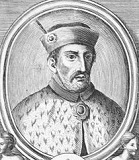






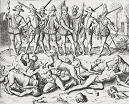

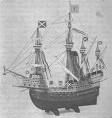




1511 In Jan. after Pope Julius II forms the Holy League with HRE Maximilian I and Venice to drive the French out of Italy, with duke Francesco Maria I della Rovere (1490-1538) of Urbino as CIC of papal troops, and Sicilian viceroy (1507-9) and viceroy of Naples (since 1509) Ramon de Cardona (1467-1522) (who introduced the Inquisition in Naples, causing a popular revolt that gets the decree canceled by the Spanish king) as CIC of the League of Cambrai army; they capture Modena and Mirandola from the French, who strike back and take Bologna on May 13 after the arrival of new cmdr. Gaston de Foix, Duke of Nemours (1489-1512), causing the pope in Oct. to enlist Henry VIII of England and Ferdinand II and Isabella I of Spain in the Holy League, while James IV of Scotland renews his Auld Alliance with France and seeks to build up a rival league of France, Scotland, Ireland, and Denmark; too bad, on Jan. 20 after failing to take Bologna, Rovere has diplomat-cardinal Oliviero Carafa (b. 1430) (relative of Giovanni Pietro Carafa, who becomes Pope Paul IV) killed, causing him to be compared to mean Cesare Borgia. What's that noise? In Mar. insane tyrant Diego de Nicuesa is voted out of power in Antigua and deported on a dilapidated ship that wrecks en route to Espanola, killing all aboard; meanwhile after sending Enciso back to Spain, Balboa has fun enslaving and looting the local pop. the Catholic Spanish way, incl. setting wild dogs on same-sex married females (lesbians), gays, and other Indians he thinks are too un-Christian to fool with; after cents. of suppression of same-sex marriage and homosexuality, followed by a coverup for the winning side, in 2004 U.S. Pres. George W. Bush utters the immortal soundbyte: "The union of a man and woman is the most eduring human institution, honored and encouraged in all cultures and by every religious faith." On Apr. 9 St. John's College at Cambridge U. is chartered; Desiderius Erasmus (1466-1536) of Rotterdam, having "done" Oxford begins lecturing at Cambridge (until 1514), home of Thomas More, staying at Queen's College. On May 11 the Duchy of Courland declares war on the Teutonic Order (ends 1515), and gains the support of Poland-Lithuania, while the order gains the support of the Hanseatic League and distant England, which can't do much to help; after the 11K-man Courland army invades Memel, the Polish army under Michael Glinski invades Livonia and takes Dorpat, then conquers E Pomerania, while the Hansa army captures W Prussia; too bad, Sweden declares peace with the order in return for cash, and pumps up its army and invades Courland, causing Courland to make peace with the Hansa after agreeing to pay them 63 ducats, and Poland to make peace with the Order for 108 ducats, leaving Courland to fight on alone. On July 25 after Portuguese navigator Antonio de Abreu (1480-1514) leads a Chinese junk up the Malacca River at high tide, allowing them to land, the Portuguese under Gen. Afonso de Albuquerque conquer Malacca (Melaka)near the Strait of Malacca in the S Malay Peninsula, enter of the spice trade (until 1641); not seeking to colonize but only trade, they send envoys to open trade relations with neighboring states while building fortified trading posts; meanwhile the southernmost Malaysian state of Johore, home of 4,180 ft. Mt. Ophir (Gunung Ledang) is founded as a Muslim state, with capital at Johore Bahru (Baru) (Baharu) ("new") on the S coast, 15 mi. N of Singapore. On Aug. 2 Scottish high adm. and privateer (carrying a letter of marque from the Scottish crown) Sir Andrew Barton (b. 1466) is mortally wounded in a sea battle with English adm. Sir Edward Howard (1746-1513), beating a drum to encourage his sailors before bleeding to death, pissing-off his friend James IV, who claims an English violation of the 1502 Treaty of Perpetual Peace; the English counter with "who do ya think you're kidding, he's just a pirate"; Barton passes into an English folk song: "I am not hurt but I am not slain./ I'll lay me down and bleed awhile,/ Then I'll rise and fight again." Tits of the morning to ya, captain? On Aug. 14 the Ceiling of the Sistine Chapel (begun in 1508), painted by Michelangelo di Lodovico Buonarroti Simoni (1475-1564) is officially unveiled, with Pope Julius celebrating Mass, although he takes until next All Saint's Day (Halloween) (Nov. 1) to put in the finishing touches (the lunettes) and invite the public to view it; his many Ignudi (nude youths with flaccid weenies at the corners of the main pictures, and nude women with big tits and shaved bushes) stir accusations of paganism, which Michelangelo answers by calling them symbols of truth and purity, and which the Church officials solve by painting over the lewd parts: he gets away with eight rams heads representing the female reproductive system at the bottom of giant Vs representing male organs; Eve holds her arms out in a V-shape representing you know what; "My eyes which are in love with beauty and my soul which is in love with salvation can only ascend to heaven by the contemplation of all the beauty surrounding me"; the Church is still debating whether women have souls; as a Neoplatonist he believes that the soul can attain grace and remember God only by breaking the chains binding it to Earth, i.e., by asceticism, and that beauty equates with goodness? On Aug. 15 after Christopher Columbus' son Diego sends an expedition commanded by Spanish conquistador Diego Velazquez de Cuellar (Velázquez de Cuéllar) (1465-1524) to conquer Cuba, he founds the city of Baracoa on the E tip (modern-day pop. 82K), becoming the oldest Spanish settlement in Cuba and its first capital, giving it the nickname "Ciudad Primada" (First City). In Nov. the English leave Navarre in S France after promised Spanish forces don't arrive; Henry VIII gets tired of faking it and begins to reform the English royal navy, building double-deck 1K-ton 70-gun ships - it's not the size of the package it's the motion of the ocean is a total lie? After Diego Columbus goes to Madrid to stake his claims, Juan Ponce de Leon is removed as Spanish gov. of Puerto Rico, causing him to begin exploring new areas to the N of Cuba to stake his own claims. Scottish sea capt. (a privateer known for preying on English and Continental shipping with his brothers John and Robert) Albert (Albrecht) I of Hohenzollern (1490-1568), maternal nephew of Polish king Sigismund I and member of the Hohenzollern family is elected grandmaster #37 of the Teutonic Knights in Prussia (until 1525), hoping to peacifully settle the long dispute over East Prussia, which has been held by the Order under Polish suzerainty since the 1466 Second Peace of Torun; meanwhile he refuses to submit to the Polish crown and negotiates with HRE Maximilian I to go to war if necesary - gotta pay your dues if you want to sing the blues, and you know it don't come easy? On Oct. 11 Giovanni de' Medici (later Pope Leo X) is appointed papal legate of Bologna and the Romagna, working to end the Pisan Schism, which is backed by the Florentine Repub. (ends 1517). The first Spanish audiencia (royal tribunal and govt.) in America is founded in Santo Domingo (Española). The city of Parma is ceded to the Holy See. The longtime feud between the Colonna and Orisini families in Rome is ended by a papal bull; in 1571 the heads of both families marry the nieces of Pope Sixtus V and kiss and make up. Thomas Wolsey begins his rise to power with appointment as privy councilor in charge of foreign and domestic affairs in England. Deominian friar Antonio de Montesinos (1480-1545) gives a sermon decrying the mistreatment of the Am. aborigines. Dutch scholar Desiderius Erasmus (1466-1536) becomes prof. of Greek at Cambridge, going on to trans. the New Testament and shake up the Bible-ignorant Roman Catholic world. The Cosentian Academy (Accademia Cosentina) (originally Accademia Parassiana) in Cosenza, Italy is founded by Aulo Giano Parassio (1470-1522), known for his large library; after his death Bernardino Telesio (1509-88) reorganizes and renames it Accademia Telesiana. Architecture: Leonaro da Vinci begins studies for the Trivulzio Monument for Gian Giacomo Trivulzio (1440-1518) of Milan. Margaret of Austria is begun of the late Gothic-style Church of Brou in Bourg-en-Bresse, on the Reysouze River 38 mi. NE of Lyons in memory of her hubby Philip IV the Fair of Savoy (finished 1536), later becoming the subject of a famous poem by Matthew Arnold, beginning "Down the Savoy valleys sounding,/ Echoing round this castle old,/ 'Mid the distant mountain chalets/ Hark! what bell for church is toll'd?" Architecture: The dome of newly-completed (1506) Seville Cathedral in Spain collapses; ditto in 1888. The Villa Farnesina (begun 1508) is finished. Inventions: The 4-mast 300-gun Great Michael is built at Newhaven dockyard in Scotland, becoming one of the largest wooden-walled ships ever built, using so much wood that it depletes the oak forests of Fife and causes Norwegian wood to have to be imported, skyrocketing the total cost to £30K after outfitting - shouldn't that be Great John Lennon? Science: Italian-born Peter Martyr d'Anghiera (1457-1526) is appointed by HRE Charles V as the chronicler for the Council of the Indies, going on to pub. eight "Decades", descriptions of all the exciting voyages and discoveries in the New World, and become the first writer to realize the significance of the Gulf Stream, which is first discovered in 1513 by Juan Ponce de Leon's expedition. Nonfiction: Peter Martyr d'Anghiera (1457-1526), Opera, Legatio, Babylonica, Oceanidecas, Paemata, Epigrammata; first of his eight Decades (1511-25); first account of the Spanish New World discoveries, incl. the first mention of "La Bermuda" among Atlantic islands. Desiderius Erasmus (1466-1536), In Praise of Folly (The Praise of Folly) (Stultitiae Laus) (Morias Enkomion); written in 1509; inspired by Faustino Ferisauli's "De Triumpho"; big hit mocking superstition, helping launch the Protestant Reformation, which he never joins; makes a fan of Pope Leo X; dedicated to his friend Thomas More, on whose estate in Bucklersbury he composed it in one week; full of double and triple entendres, incl. the Dutch title, launching the field of Adoxography, "fine writing on a trivial or base subject"; the 1515 Basel ed. is illustrated by Hans Holbein the Younger. Peter Martyr d'Anghiera (1457-1526), Opera, Legatio, Babylonica, Oceanidecas, Paemata, Epigrammata; first historical account of the Spanish New World discoveries. Johann Reuchlin (1455-1522), Augenspiegel (Mirror of the Eye); argues against the destruction of Hebrew books unless they contain anti-Christian polemic - I'm a believer, I'd never leave her if I tried? Arnolt Schlick, Spiegel der Orgelmacher und Organisten. Martin Waldseemuller, Map of Alsace, Lorraine, and the Rhine Valley; accurate. Art: Vittore Carpaccio (1460-1526), Life of St. Stephen (1511-20). Albrecht Durer (1471-1528), Adoration of the Trinity. Il Giorgione (1477-1510), Pastoral Symphony; attributed to Titian because of the similarity of styles. Matthias Grunewald (1465-1528), Art for the Isenheim Altar (1511-15). Lorenzo Lotto (1480-1556), Self-Portrait. Raphael (1483-1520), Private Papal Library (first of three rooms in the papal apts.); on each of its four upper walls is a female muse (Theology, Philosophy, Poetry, and Justice); two frescoes adorn the lower wall; he also paints The Triumph of Galatea. Andrea del Sarto (1486-1531), Frescoes in the Chiostro dello Scalzo, Florence (1511-26); grisaille (monochrome) frescoes, incl. The Baptism of Christ Titian (1488-1576), Life of St. Anthony (frescoes in the Scuola di San Antonio, Padua). Plays: Gil Vicente (1470-1536), Auto de los Cuatro Tiempos. Births: Scottish king (1513-42) James V (d. 1542) on Apr. 10 in Linlithgow, West Lothian; son of James IV (1473-1513) and Margaret Tudor (1489-1541) (daughter of Henry VII of England). Italian painter-architect-biographer and art historian Giorgio Vasari (d. 1574) on July 30 in Arezzo, Tuscany; coins the term "Renaissance" (Rinascita) in 1550; works for the Medicis restoring the broken hand of Michelangelo's statue of David and filling Florence with frescoes? Spanish (Catalan) scholar-scientist-physician-philosopher (Unitarian) ("Father of Comparative Geography and Ethnography") Michael (Miguel) Servetus (Serveto) (Servet) (d. 1553) on Sept. 29 in Villanueva de Sijena, Huesca, Aragon; mother's line is converted Jews; pioneer in the theory of the pulmonary circulation; at age 16 goes to the U. of Toulouse to study law, where he reads a Bible for the first time, shaking his faith in Roman Catholicism? German astronomer Erasmus Reinhold (d. 1553) on Oct. 22 in Saalfeld, Thuringia; educated at the U. of Wittenberg. Dutch Renaissance Latin poet Johannes (Janus) Secundus (Jan Everaerts) (d. 1536) on Nov. 15 in The Hague; son of Nicolaes Everaerts (friend of Erasmus). Burmese Hanthawaddy king #18 (1526-39) Thushin Takayutpi (d. 1539) in Pegu; eldest son of Binnya Rhan II (1469-1526). Portuguese physician-botanist (Jewish) Amatus Lusitanus (Amato Lusitano) (Joao Rodrigues de Castelo-Branco) (Haviv) (d. 1568) in Castelo-Branco; educated at the U. of Salamanca; discoverer of the circulation of the blood? Italian architect Giovanni Sallustio Peruzzi (d. 1573) in Siena; son of Baldassare Peruzzi (1481-1536). Deaths: Italian diplomat-cardinal Oliviero Carafa (b. 1430) on Jan. 20 (executed). Flemish composer Johannes Tinctoris (b. 1436). Turkish adm. Kemal Reis (b. 1451) in the Mediterrean Sea (storm). Spanish conquistador Diego de Nicuesa (b. 1464) near Hispanola (shipwreck). English poet Stephen Hawes (b. 1475). Venetian painter Il Giorgione (b. 1477) in Venice (plague).


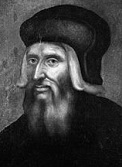


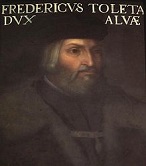
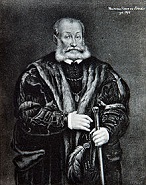



1512 On Jan. 2 Swedish regent (since 1504) Svante Nillson (b. 1460) dies, and on Jan. 15 Eric Trolle (Erik Arvidsson) (1460-1530) is elected regent of Sweden, then desposed on July in favor of Sten Sture the Younger. On Feb. 6 John Colet (d. 1519), dean of St. Paul's in London since 1505 gives a Convocation Sermon to the clergy of Canterbury in London Cathedral, in which he calls himself "a man sorrowing for the ruin of the Church", and says that he came "to admonish you with all your minds to deliberate... concerning the reformation of the Church", saying that the four great evils it has fallen into are devilish pride, carnal concupiscence, worldly covetousness, and worldly occupations, which later causes him to be labeled a pseudo-Protestant although he stays loyal to the Roman Catholic Church and dies before the Reformation reaches England (and the Protestants later fall into the same evils themselves?); next year on Good Friday he gives another sermon before the royal court arguing against England's war with France on the grounds that all war is wrong and Christians should fight only for Christ. On Feb. 18 after 23K French forces in Italy (incl. 8.5K landsknechts and Gascon infantry) under new cmdr. (since 1511) Gaston de Foix, Duke of Nemours (1489-1512) begin capturing cities in the Romagna and Veneto to deny them to the Holy League, and Brescia revolts against the French and is garrisoned with Venetian troops, the Sack of Brescia sees the French attack in a rainstorm through a field of mud after removing their shoes, taking the city after the defenders suffer 8K-15K casualties, going on to sack the city and massacre thousands of civilians over the next five days, after which Bergamo plays a 60K ducat ransom to avoid the same fate; Gaston de Foix gains the nickname "the Thunderbolt of Italy", marching in late Mar. E from Bologna toward Ravenna accompanied by an Italian army under Alfonso I d'Este, Duke of Ferrara, causing Pope Julius II to sent a Spanish army under Ramon de Cardona, which passes Foril on Apr. 9, marches N along the Ronco River, and reaches Molinaccio on Apr. 10, find themselves only 1 mi. S of the French, separated by the river; on Apr. 11 (Easter) French forces aided by excommunicated (since 1510) duke Alfonso I d'Este of Ferrara defeat the 16K papal forces of the Holy League at the Battle of Ravenna (garrisoned by 5K men), with the Spanish army losing 9K KIA and the French army losing 4.5K KIA and 4.5K wounded despite the brilliant defenses of Spanish military engineer Pedro Navarro, Count of Oliveto (1460-1528) (obstacles and entrenchments, plu artillery mounted on light carts), with Pierre du Terrail, Chevalier de Bayard (1473-1524) ("le chavlier sans peur et sans reproche") declared hero of the battle; Gaston de Foix is KIA, and Spanish cmdr. Pedro Navarro is captured; the Italian Wars begin to go bad for the French; the Swiss force the French to evacuate Milan in May; French rule ends in Genoa, and the Genoese regain control of Corsica, introducing their lovely practice of the vendetta (blood feud); Niccolo Machiavelli reorganizes the defense of the Repub. of Florence as the Medicis lead a large army towards it, and the Medicis win after a bloodbath, and Soderini is overthrown, along with the First Florentine Repub. (founded 1501); Machiavelli tries to transfer his services (Machiavellian-style?) to the victors, but is tortured on the rack and expelled (Machiavellian-style?), taking up new residence in a villa in Sant'Andrea in Percussina (near San Casciano in Val di Pesa) 12 mi. from Florence, where he takes up the writing of books (Machiavellian-style?); the Grisons (Graubunden) of E Switzerland seize the Valtellina in N Italy (E of Lake Como), causing Roman Catholic-Protestant strife there for the next cent.; the Swiss receive Locarno, Lugano, and Ossola (all later combined into Ticino) as their reward for helping against the French. On Apr. 25 sultan (since 1481) Bayezid II (b. 1447) is forced to abdicate by his Janissaries backed by his tall strong scheming son Selim I (Arab. "peace") (the Grim) (Yavuz) (1470-1520), who on May 26 becomes Ottoman sultan #9 (until Sept. 22, 1520) after quashing a rebellion of his brothers and nephews in Anatalia and having them strangled and shipped to Rancho de Cielo in Nov.; on May 26 Bayezid II dies en route to his hometown of double-walled Dimetoka; Selim I writes poetry under the alias Mahlas Selimi, while his arch-rival Ismail I writes it under the alias Khata'i. On May 3 the Fifth Council of the Lateran convenes in the Archbasilica of St. John Lateran (until Mar. 16, 1517), attended by 15 cardinals, 10 archbishops, 56 bishops, and the Latin patriarchs of Alexandria and Antioch, becoming the last before the Protestant Reformation, publishing decrees requiring local bishops to give permission before the printing of new books, rejecting the 1511 Conciliabulum of Pisa, and promoting a holy war against the infidel Turks to reclaim the Holy Land; the immortality of the soul becomes Church dogma (what about Ecclesiastes Ch. 9?); Martin Luther pub. his "95 Theses" 7 mo. after the council closes. In May Bogdan III, aided by Polish troops kicks the Tar, er, Tartars out of Moldavia, which becomes a vassal of the Turkish Empire on the same conditions as Wallachia, allowed to remain Eastern Orthodox but accepting a voivode selected by the Turks, who will not be allowed to build mosques, own land, settle, or be buried there; in 1514 Bogdan III sends his chancellor Tautu to negotiate with sultan Selim I, who demands 4K gold coins for jizya (tribute) a year, along with a 1-time gift of 40 horses and 40 falcons and other expenses, plus personal assistance leading a 4K-man army in time of war. In summer after receiving support from a papal bull, Castillian regent Ferdinand II of Aragon sends Don Fadrique Alvarez de Toledo y Enriquez, 2nd Duke of Alba (1460-1531) to complete the conquest of Iberian Navarre, who does it in two weeks. In July James IV and Louis XII renew the 1295 Auld Alliance; all citizens of France become Scottish citizens and vice-versa, keeping Scotland as the Cuba of Europe? On Aug. 10 after invading France, the 25-ship English navy under Sir Edward Howard defeats the 22-ship French and Breton fleet under Rene de Clermont at the naval Battle of Saint-Matthieu, with both sides using ships firing cannon through ports for the first time, and both losing their principal ships Regent and Marie la Cordeliere. On Oct. 21 Martin Luther is granted a doctorate in theology, and on Oct. 21 he joins the theological faculty of the U. of Wittenberg. On Nov. 1 Michelangelo's newly-finished Sistine Chapel ceiling is first exhibited to the public. On Dec. 27 the Spanish Laws of Burgos are passed, forbidding enslavement of Native Ams. and advocating Christian (Roman Catholic) conversion; conveniently, prior enslavement has killed most of them, and the Spanish colonists in Hispaniola begin to import African slaves from Guinea, who last longer under slavery conditions than aborigines, and allegedly can do 4x as much work - as Jimmy the Greek says? The Danish-Swedish War (begun 1501) ends - who won, Beowulf or Brigitte Nielsen? The Fourth Russian-Lithuanian War (ends 1522) begins after Russia invades Lithuania again and unsuccessfully sieges Smolensk, after which the Lithuanians under grand hetman (since 1497) Konstanty Iowanowicz Ostrogski (1460-1530) ravage Severia, and defeat the Crimean Tartars on Apr. 28 in the Battle of Wisniowiec, causing them to ally with Lithuania and begin devastating Russian territories. Ferdinand V of Spain annexes the kingdom of Navarre. The Diet of Cologne (Koln) futher reorganizes the fractured half-medieval German empire by renaming it to the Holy Roman Empire of the German Nation, establishing 10 circles of states (Landfriedenskreise): Austria, Bavaria, Swabia, Franconia, Upper Rhine, Lower Rhine, Burgundy (until 1556), Westphalia, Lower Saxony, and Upper Saxony, consisting of 240 states (excluding the imperial knights), with Bohemia and the neighboring states of Moravia, Silesia, and, Lusatia not incl.; the Aulic Council is founded as a court under the control of the emperor rather than the imperial chamber, to which the latter's business is gradually diverted. Shia becomes the state religion of Safavid Persia. Golconda gains independence from India. After setting sail from Malacca last Nov. with three ships led by the Santa Catarina, along with 120 Portuguese and 60 slaves guided by Malay pilots, Portuguese navigator Antonio de Abreu (1480-1514) sails through Java, the Lesser Sunda Islands, and Ambon Island, discovering Timor (Malay "timur" = east) at the E end of the Lesser Sunda Islands (modern-day pop. 3.1M), and the 10 volcanic Banda Islands 2K km E of Java (modern-day pop. 18.5K), world's only source of nutmeg and mace. Juan Ponce de Leon discovers the Turks and Caicos Islands, going on to capture and enslave the Taino and Lucyan natives for work in Hispaniola, depopulating them by 1513 and not recovering until the 17th cent. Portuguese explorer Pedro Mascarenhas (1470-1555) discovers Diego Garcia in the Indian Ocean, and reaches Mauritius in the Mascarene Islands. Portuguese explorer Francisco Serrao (-1521) (cousin of Ferdinand Magellan) becomes the first Euro to sail E from Malacca through Indonesia and the East Indies and becoming a personal advisor to Sultan Bayan Sirrullah of Ternate. Ascanian prince Wolfgang of Anhalt-Kothen (Anhalt-Köthen) (1492-1566) grants brewing rights to the citizens of Ballenstedt in Saxony-Anhalt. A mutiny by Turcoman Qizilbash causes an entire Qizilbash army to be annihilated by the Uzbeks, ending Persian Safavid expansion in Transoxiana and leaving the NE Persian border open to nomad incursions. Albrecht Durer becomes court painter to HRE Maximilian I (until 1519). Paracelsus moves to Ferrara. Titan returns from a visit to Padua and gives up the Il Giorgione style, developing his own - welcome to the future? Augsburg issues a ban on quack doctors. The term "masque" is first used to denote a poetic drama. HRE Maximilian I's indebtedness to Jakob Fugger causes public resistance to trading monopolies in Germany to tank. The Portuguese discover nutmeg on Banda Island in the Moluccas. The word "masque" is first used to denote a poetic drama. Wolverhampton Grammar School in England is founded by Sir Stephen Jenyns (1450-1523). Inventions: A Dutch trader invents brandy (brandewijn) - I'm a dry and thirsty man? Nonfiction: Aleandro Aleander (1480-1542), Lexicon Graeco-Latinum. Nicolaus Copernicus (1473-1543), The Commentariolus; states that the Earth and the planets turn around the Naughty Naughty Sun. Desiderius Erasmus (1466-1536), Copia: Foundations of the Abundant Style (De Ultraque Verborum ac Rerum Copa) (Paris); compiled while teaching at Cambridge U.; a bestselling textbook on rhetoric, dissing the "false copia" of blind followers of Cicero and promoting variety of expression and subject matter; "[Variety] is so powerful in every sphere that there is absolutely nothing, however brilliant, which is not dimmed if not commended by variety"; goes through 85 ed. in his lifetime, growing from 153 to 206 chapters. Thome Pires, An Account of the East from the Red Sea to Japan, Written in Malacca and India in 1512-15. Music: Erhart Deglin (of Augsburg), Liderbuch zu Vier Stimmen. Josquin des Pres (1450-1521), Second Book of Masses (Missa de Beata Virgine). Art: Hans Baldung Grien (1484-1545), The Trinity and Mystic Pieta - starring Julia Roberts? Michelangelo (1475-1564) finishes painting the Ceiling of the Sistine Chapel (begun in 1508), with the theme of "ante legem" (before Moses receives the Ten Commandments) to fit in with the lateral wall themes of "sub lege" (under the Law of Moses) and "sub gratia" (during the life of Christ), adding the ancestors of Jesus starting with Abraham, plus the soothsayers; the 300 Biblical figures are in chronological order, beginning with God Dividing the Light from the Darkness above the altar, Creation of the Sun, Moon and the Planets, God Dividing the Waters, The Creation of Adam (1510), The Creation of Eve, The Fall of Adam and Eve, The Sacrifice of Noah, The Deluge, and ending with The Drunkeness of Noah at the far end of the Chapel; Neoplatonists note that in reverse order they show the progression from the soul enslaved by earthly passions to a final state of grace - in a world sans women? Il Perugino (1445-1523), Altarpiece of the Church of Sant' Agostino in Perugia (1512-7). Raphael (1483-1520), Portrait of Pope Julius II; The Meeting between Leo I the Great and Attila the Hun (1512-4). Andrea del Sarto (1486-1531), The Annunciation. Titian (1477-1576), Three Ages; Noli Me Tangere; Salome with the Head of John the Baptist; Self-Portrait; thought to be of Ariosto until modern times. Leonardo da Vinci (1452-1519), Self-Portrait as an Old Man. Poetry: Thomas Murner (1475-1537, Die Narrenbeschworung (satire). Births: German duchess Sybille of Cleves (d. 1554) on Jan. 17 in Dusseldorf; eldest daughter of Duke John III of Cleves (Cleve) (Kleve) (1490-1538) (leader of German Protestantism) and Duchess Maria of Julich-Berg (1491-1543); sister of Anne of Cleves (1515-57); wife (1526-) of elector John Frederick I the Magnanimous of Saxony (1503-54); mother of John Frederick II (1529-95), Johann Wilhelm (1530-73), Johann Ernst (1535), and Johann Frederick III (1538-65). Portuguese Avis king #17 (last) (1578-80) cardinal Henry (Henrique) I (d. 1580) on Jan. 31 in Lisbon; son of Manuel I (1469-1521) and Maria of Aragon (1482-1517); younger brother of John III the Pious (1502-57); great-uncle of Sebastian I (1554-78). Flemish cartographer-globemaker Gerhardus (Gerardus) Mercator (Gheert Cremer) (d. 1594) (Lat. "merchant") on Mar. 5 in Rupelmonde, East Flanders; student of Macropedius; educated at the U. of Leuven. Italian travel writer Ortensio Landi (d. 1553). English queen (1543-7) (6th and last wife of Henry VIII) Catherine (Katherine) Parr (Parre) (d. 1548); daughter of Sir Thomas Parr. Italian architect Galeazzo Alessi (d. 1572) in Perugia. Italian Venetian humanist printer Paulus Manutius (Paolo Mannucci or Manuzio) (d. 1574); 3rd son son of Aldus Manutius (1449-1515). Spanish historian Jeronimo (Geronimo) de Zurita y Castro (d. 1580) in Zaragoza; student of Hernan Nufiez. Italian architect-artist Pirro Ligorio (d. 1583) in Naples. Italian Venetian Rialto Bridge architect Antonio da Ponte (d. 1595). Italian painter Prospero Fontana (d. 1597). Scottish reformer churchman John Craig (Gael. "rock") (d. 1600) Deaths: French sculptor Michel Colombe (b. 1430) in Tours. Ottoman sultan #8 (1481-1512) Bayezid II (b. 1447) on May 26. Italian "America is named after me" explorer Amerigo Vespucci (b. 1454) on Feb. 22 in Seville, Castille, Spain. Italian anatomist Alexander Achillini (b. 1463). French gen. Gaston de Foix, duke of Nemours (b. 1489) on Apr. 11 in Ravenna, Italy (KIA).






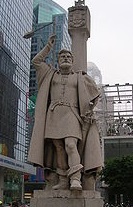
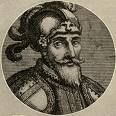


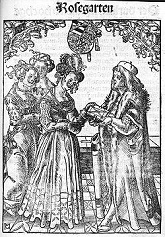


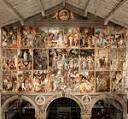


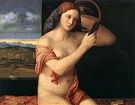
1513 On Jan. 20 Vasco Nunez de Balboa writes a letter to the Spanish king containing the first known reference to El Dorado, a one-stop-shopping center for gold smelting, mentioning the Panamanian cacique Dabaibe (Dabeiba), whose people like to live in trees. On Feb. 20 King Hans (b. 1455) dies after falling from a horse in Skjern Creen, and on July 22 his harsh-ruling common-people-loving son Christian II (1481-1559) becomes king of Denmark and Norway (until 1523); the Swedes refuse to accept him until 1520; until 1972 only men named Christian or Frederick rule Denmark. You're very well-read, it's well known, but but but but a sword swallower comes up to you and he kneels, he crosses himself and clicks his high heels, hands you his throat and says thank you for the loan? On Feb. 21 Pope (since 1503) "Il Pontiface Terribilis" Julius II (b. 1443) dies, and on Mar. 11 Giovanni de' Medici is elected Pope (#217) Leo X (1475-1521), the "elegant pagan Pope" (Thomas Carlyle); the merchant-moneylender Medici family reaches new heights of power; Leo is only 38-y.-o., short, fat, with an effeminate countenance and weak eyes, and sweats a lot, and is a promiscuous homosexual who suffers from ulcerations of the anus so severe he has to be carried to the conclave on a stretcher; he sees the papacy as a big candy store, a way to live the life of Croesus and get women, er, men and boys, causing him to soon bankrupt the papal treasury and resort to selling indulgences on an unprecedented scale, turning the papacy into a virtual Mafia by stacking all the avenues of promotion with his relatives, for a price; the profligate pope bankrupts the treasury within a year of taking office; the Holy League begins to fall apart; cardinal-elector Albert of Brandenburg (1490-1545) gives him 10K (30K?) ducats in return for the archbishopric of Mainz and the privilege of selling indulgences for eight years, half to go to repay him for the loan and the other half straight into the pope's pockets; Albert uses Dominican friar Johann Tetzel (Diezel) (1465-1519) to do the sales job, and the latter uses the sales pitch: "As soon as the coin in the coffer rings, the soul from purgatory springs"; meanwhile duke Francesco Maria I della Rovere of Urbino, who was just created lord of Pesaro only to see his supporter Pope Julius II croak, loses it to Leo X's nephew Lorenzo II de' Medici. On Mar. 4 Puerto Rico gov. Juan Ponce de Leon (León) (1460-1521) sets out from Puerto Rico with 200 men, sighting Florida (Fla.) (Sp. "flowery") on Mar. 27 (Pascua Florida) (Easter Sunday), naming it, and planting orange and lemon trees there; the Fountain of Youth, allegedly to be found at a mysterious place called Bimini he looks for but doesn't find, and the Spanish end up launching six unsuccessful expeditions by 1563 to colonize Fla. In Mar. the Portuguese under Alfonso de Albuquerque unsuccessfuly try to capture Aden on the Red Sea coast from the Mamluks; he returns to India and defeats the kingdom of Calicut. On Apr. 30 leading Yorkist claimant and Tower of London inmate Edmund de la Pole, 3rd Duke of Suffolk, 6th Earl of of Suffolk (b. 1471) is executed. In May the French agree to equip the Scottish fleet, grant 50K francs, and provide seven war galleys commanded by #1 French adm. Gaston Pregent (Prégent) de Bidoux (1468-1528). HRE Maximilian I, Henry VIII, Ferdinand II of Aragon, and Pope Leo X sign the Treaty of Mechlin, agreeing to invade France, although England ends up footing most of the bill; Catherine of Aragon rules England as regent while her hubby Henry VIII goes to France; on June 30 after English ambassador Nicholas West (1461-1533) fails in efforts to keep Scotland neutral, then Cardinal Christopher Bainbridge, archbishop of York delivers a papal sentence of excommunication to James IV, the English land near Calais and take Therouanne (Thérouanne) and Tournai. On June 6 13K Swiss mercenaries coming to relieve the siege ambush and defeat 10K French, Venetians, and German Landsknecht mercenaries led by Louis II de La Tremoille (1460-1525) in one hour at the "no faira" Battle of Novara in N Italy 25 mi. W of Milan; the French take 5K-10K casualties vs. 1K for the Swiss, and the Swiss execute hundreds of German mercenaries, then pursue the French to Dijon, where the French pay them off to leave France; Louis XII gives up Milan and ends his Italian invasion; Lodovico's son Massimiliano is restored as ruler of Milan by the Swiss. In the summer the 13-ship Scottish fleet, led by the Great Michael and carrying 4K men under Earl James Hamilton of Arran sails N through the Pentland Firth and past the Hebrides, attacking the English stronghold of Carrickfergus in Ulster; too bad, Great Michael runs aground - more speed, Scotty? On Aug. 16 the English army (sans Henry VIII, who hasn't arrived yet) defeat the French at the Battle of the Spurs at Guinegate in N France. In Aug. James IV of Scotland (b. 1474) invades England with an army of 30K-40K (largest ever) (incl. 17 artillery pieces) to help his ally France, and on Aug. 28-29 captures Norham Castle, home of the hated Bishop of Durham, then moves S up the Till Valley in Northumberland, taking Etal Castle and Ford Castle (home of Bastard John Heron); meanwhile Henry VIII's diverts some forces from France under Earl Thomas of Surrey, and Sir Thomas Howard, 2nd duke of Norfolk, under the direction of English Queen Catherine of Aragon, and on Sept. 9 the Battle of Flodden (Branxton) Hill (Field) in N Northumberland on the edge of the Cheviot Hills sees stupid James IV leave his strategic position on Flodden Hill to attack the English on the marshy slopes of Branxton Hill, and use poor military tactics, getting his butt kicked and losing half his men, becoming the last medieval battle in Europe using knights and armor; "The flowers of the forest are withered away"; never again will Scotland defeat England in war?; James IV is KIA along with his son Alexander (b. 1493), Archbishop Alexander of St. Andrews, one bishop, two abbots, nine earls, and 14 lords of parliament; the clunky Scottish navy is sold to France; James IV's 17-mo.-old son James V (1511-42) succeeds him, with James IV's wife (Henry VII's sister) Mary Tudor as regent, which doesn't sit well with the Scottish people; does Catherine's military V stir up a wee bit of jealousy in her hubby Henry? Big year for surfers? On Sept. 25 (27?) after receiving reinforcements from Spain along with the title of capt.-gen. of Antigua, and hearing that his enemy Martin Fernandez de Enciso has been bringing charges of usurpation against him, making it necessary to do something big (turn some profit) to stay in power, then leaving on Sept. 1 with 190 Spaniards and 1K Indians to search for a great body of water described by an Indian friend, and fighting off pesky natives in dense jungles and swamps, Vasco Nunez (Núñez) de Balboa (1474-1519) climbs solo to a mountain peak and becomes the first Euro to see the Pacific (Peaceful) Ocean (Great South Sea); four days later he and his men reach the ocean and claim it and all shores washed by its waters as a possession of the Spanish (Castilian) crown, with Balboa wading into the sea in full armor to jazz it up, returning next Jan. with a treasure of loot incl. 40K pesos in gold, plus pearls and slaves; meanwhile on July 27 the king appoints 72-y.-o. Pedro Arias de Avila (Pedrarias) (1442-1531) as gov., and next year he sets out in 20 ships with 2K men and women, incl. Francisco de Coronado, Hernando de Soto, Diego de Almagro, and Pascual de Andagoya; meanwhile Balboa founds Castilla del Oro (Darien) on the base of the Isthmus of Panama on the South Am. mainland, with Spanish 1.5K colonists; the currency of Panama is later named after him (Costa Rica goes for Cristobal Colon, er, Christopher Columbus); the (rocky?) Balboa Monument is inagurated in Panama City on Sept. 29, 1924; Ferdinand Magellan names the Pacific Ocean in Nov. 1519; the Pacific is actually anything but peaceful during the hurricane season, but people get less seasick on it than they do on the Atlantic Ocean when rounding the Horn? Peasant revolts rock Wurttemberg and the Black Forest. The Polish-Lithuanian army drives the Russians from Vitebsk and Polotsk. Sultan Selim I accepts the submission of Moldavia, but forces it to pay an annual tribute of 4K gold coins, 40 horses, and 40 falcons in exchange for a high degree of autonomy. The guilds of Duisburg stage an unsuccessful revolt against the nobles. Appenzell E of Schwyz (S of Lake Constance) joins the Swiss Confederation, and each canton sends two delegates to a federal assembly. Portuguese navigator Pedro de Mascarenhas (1470-1555) discovers uninhabited Reunion (Réunion) Island 400 mi. SE of Madagascar and 130 mi. SW of Mauritius, naming it Santa Apollonia, using the name Mascarene for the whole region; Arab sailors earlier called it Dina Morgabin (Western Island) - don't go away, I want you to stay? In 1513 the first European ship to land in China is a Portuguese caravel commanded by Jorge Alvares (Álvares) (-1521) that reaches Canton (Guangzhou); later in the year Rafael Perestrello, a cousin of Christopher Columbus is sent by viceroy Alfonso deo Albuquerque in a ship from Malacca, landing on the S shores of Guangdong. The Spanish found Bayamo in the West Indies. Sultan Selim I issues a firman regarding the Dionysiou Monastery. Titian is appointed supt. of govt. works at Venice. Pope Leo X gives Leonardo da Vinci rooms for his use at the Vatican Palace. Architecture: Pope Leo X begins the Vatican Sculpture Gallery. Chartres Cathedral 60 mi. SW of Paris is completed after 400 years. Tilman Riemenschneider (1460-1531) finishes the Tomb of HRE Henry II. Holyrood Palace at the foot of Canongate in Edinburgh, Scotland (begun 1473) is completed; it burns down in 1650, and is rebuilt by Charles II, becoming the official residence of the British sovereign in early summer. Nonfiction: Euchaius Rosslin (1470-1526), Der Schwangern Frauwen und Hebammen Rosengarten (Der Rosengarten) (The Rose Garden); Latin tr. pub. by his son Eucharius Rosslin the Younger in 1532 as "De Partu Hominis"; first English tr. by Richard Jonas pub. in 1540 as "The Birth of Mankind"; 2nd English tr. by Thomas Raynalde pub. in 1545 by Thomas Geminus as "The Woman's Booke"; becomes the #1 English ref. work on midwifery for the next cent. Niccolo Machiavelli (1469-1547), The Prince (Il Principe); written in vernacular Italian, first circulated this year, and pub. in 1532, becoming the first work of modern political philosophy, taking effective truth as more important than abstract ideals, in conflict with the Scholastic views of the time; teaches generations of Europeans the art of unscrupulousness; dedicates it to Lorenzo Medici, hoping for a job, but get snubbed, and instead sees his name become associated with their modus operandi, with the term Machiavellian becoming a perjorative, as well as Old Nick for the Devil; a favorite of Napoleon, Mussolini, and Lindsay Lohan; forever after everybody wants to be a Machiavellian prince?; "On Taking Power", "On Allies and Subordinates", "Qualities for Praise or Blame", "Liberality or Miserliness?", "Cruelty or Compassion?", "Be Feared or Loved?", "Keeping One's Word or Not?", "Importance of Appearances", "Avoid Being Despised and Hated", "The Value of Enemies", "On Gaining Renown", "Choosing Subordinates", "Avoiding Flatterers", "Living with Chance"; "He who neglects what is done for what ought to be done, sooner effects his ruin than his preservation"; "It is far safer to be feared than loved if you cannot be both" (ch. 17). "God is not willing to do everything, and thus take away our free will and that share of glory which belongs to us"; "Men are more apt to be mistaken in their generalizations than in their particular observations"; "There is no surer sign of decay in a country than to see the rites of religion held in contempt." Ottoman adm. Piri Reis (Haji Ahmed Muhiddin Piri) (1465-1554) pub. a Map of the Known World in two parts on long-lasting gazelle skin; only the Western portion survives, becoming the oldest surviving map of the Americas, discovered in Constantinople in 1929; it depicts Queen Maud's Land in Antarctica as it looked millions of years ago, and shows Antarctica as ice-free? Art: Fra Bartolommeo (1472-1517), St. Peter and St. Paul. Giovanni Bellini (1428-1516), Portrait of a Nude Woman; waits to age 85 to paint his first female nude? Albrecht Durer (1471-1528), Knight, Death and the Devil (copper engraving); first of the three Meisterstiche (master engravings) (1513-4). Gaudenzio Ferrari (1471-1546), The Life of Christ (21 frescoes) (Santa Maria delle Grazie, Milan); incl. The Crucifixion - busy, busy, going places? Michelangelo (1475-1564), Statue of Moses (1513-15); part of the tomb of Pope Julius II in the della Rovere family tomb in San Pietro in Vincoli (St. Peter in Chains) Basilica in Rome; he portrays him with horns protruding from his head because of a Bible mistranslation of "rays of light"? (or because it's easier to make?). Il Sodoma (1477-1549), The Death of Lucretia (Cleopatra); presented to Leo XIII, who creates him a cavaliere; Deposition from the Cross; The Marriage of Alexander the Great and Roxane with the Family of Darius III (his masterpiece?) (Bamberg Cathedral). Plays: Bibbiena (Cardina Bernardo Dovizi), La Calandria (comedy). Niccolo Machiavelli (1469-1527), La Mandragola (comedy). Poetry: Judah Abrarbanel (AKA Leo Hebraeus) (-1535), Dialogues of Love (Dialoghi di Amore); basis for Baldassare Castiglione's 1514 "Il Cortegiano" (pub. 1527). Gavin Douglas (1474-1522), The Eneados (13 vols.); a fouthy tr. of Virgil's "Aeneid", finished just before the Battle of Flodden. Births: Italian singer-composer Domenico Maria (Dominicus) Ferrabosco (d. 1574) on Feb. 14 in Bologna. English scholar-diplomat Sir Thomas Smith (d. 1577) on Dec. 23 in Saffron Walden, Essex; educated at Queen's College, Cambridge U., and the U. of Padua; knighted in 1548; not to be confused with Thomas Smith (1522-91). Irish rebel Thomas FitzGerald, 10th Earl of Kildare (d. 1537) (AKA Silken Thomas) in London, England; son of Gerald FitzGerald, 9th earl of Kildare and Elizabeth Zouche, distant cousin of Henry VII. Scottish Calvinist martyr George Wishart (d. 1546). Scottish Presbyterian church founder John Knox (d. 1572) in Giffordgate, Haddington; educated at St. Andrews U. Deaths: German Meistersinger Hans Folz (b. 1437) in Jan. in Nuremberg. Italian painter Pinturicchio (b. 1454). Danish-Norwegian-Swedish king Hans (b. 1455) on Feb. 20 in Aalborg; dies after falling from his horse in Skjern Creek. Irish lord deputy of Ireland (1477-94, 1496-1513) Gerald FitzGerald, 8th earl of Kildare (b. 1456) on Sept. 3 in County Kildare. Scottish king (1488-1513) James IV (b. 1474) on Sept. 9 in N England (KIA at the Battle of Flodden). Scottish archbishop (of St. Andrews) Alexander Stewart (b. 1494) on Sept. 9 in N England (KIA at the Battle of Flodden).
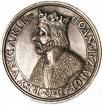
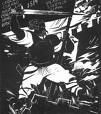






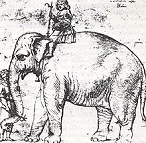



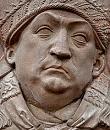





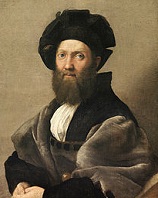
1514 On Mar. 12 Portuguese explorer Tristao da Cunha (1460-1540) marches down the streets of Rome in an elaborate procession to present the new conquests of Portugal to Pope Leo X, who receives them at Castel Sant'Angelo; the procession features pet white Indian elephant Hanno the Elephant (1510-16), (given to him by the king of Cochin), whom popey adopts, becoming his favorite pet, dying two years later from complications of treatment for constipation with a gold-enriched laxative. On May 18 Claude of Brittany (1499-1524) (daughter of Anne of Brittany by Louis XII) marries Duke Francis of Angouleme (later Francis I of France) in Saint-Germain-en-Laye, which leads to the permanent incorporation of Brittany into France after Claude's death despite everything her mommy could do. On June 30 new gov. Pedro Arias de Avila arrives in Darien, finding Balboa and his men living in mud huts surrounded by a wooden palisade and on the verge of starvation, after which Avila decides to starve Balboa's men until enough die that he can justify moving the colony to the Pacific side of the isthmus, which they do later this year, founding the settlement of Panama, which goes on to become the center for exploration to the S incl. the conquest of the Incas; Balboa becomes engaged to Avila's daughter in 1516, which doesn't stop Avila from plotting his demise. On Aug. 23 after war begins between the Suni Muslim Ottomans under Selim I and the Persian Shiites under Ismail I, they meet at the Battle of Chaldiran (Chaldoran), which is a V for the Ottomans over the Savadis; Shah Ismail is wounded but escapes to Dagestan; Selim enters Tabriz on Sept. 15 and massacres the pop.; the Persian silk trade is closed; the last battle between Turkey and Iran until ?. In Aug. Erasmus visits Basel and is given a go-ahead by publisher Johann Froben to prepare a trans. of the Greek New Testament for printing, racing to scoop the Complutensian Polygot Bible (1514). In Sept. Thomas Wolsey becomes archbishop of York. On Oct. 9 after Thomas Wolsey of England arranges a peace with France, and France makes a truce with all of its enemies except Maximilian I, Henry VII's bodacious 18-y.-o. sister Mary Rose Tudor, Duchess of Suffolk (1496-1533) marries 52-y.-o. Louis XII in Abbeville, the twice-married er, heirless old man seeking to produce an heir, and dying next Jan. 1 after 3 mo. of shagging her, which conks him out, and leaving her unpregnant, after which Mary is called the "French queen"; the custom of slashing (scissoring) of clothing originates in France and spreads to England; Catherine of Aragon's influence at court starts to wane, although she remains popular and is a favorite of Mary Rose Tudor. No wonder the Commies sold the Hungarians on Communism? An army of 100K Hungarian peasants under Gyorgy (Juraj) Dozsa (1470-1514) are gathered to crusade against the Turks; when the crusade is suspended, the peasants turn on the nobles for past injustices; the nobles, led by John Zapolya (1487-1540) (gov. of Transylvania and future John I of Hungary) defeat them at the Battle of Temesvar, execute Dozsa by roasting him alive on a red-hot iron throne with a red-hot iron crown placed on his head and a red-hot iron scepter forced into his hand, his only exclamation being "These dogs!"; after cooking him, his half-starved followers are forced to eat him, after which they are sentenced to perpetual servitude - well, they do call them hungarians? On Sept. 8 after the Russians take Smolensk, the Battle of Orsha is a V for 35K Lithuanians under Hetman Konstanty Iwanowicz Ostrogski (1460-1530) over 80K Russians under Vasily III, which is used for anti-Russian propaganda in Europe. Diego de Velazquez conquers Cuba and wipes out most of its pop., declaring himself gov. - let's get this party started? The original Miranda Warning? Pope Leo X issues a bull denouncing slavery and the slave trade; too bad, there's a catch?; Spain sends a force of 2K men to the New World to conquer lands and men for the glory of Christendom armed with the Requerimiento, a manifesto to be read to the aborigines informing them that they must convert or else be enslaved; since they can't understand Spanish, they are routinely enslaved and made to look like it is their own decision? To pacify the whisperers, Mary Tudor, regent of Scotland marries Archibald Douglas, 6th Earl of Angus (1489-1557), who takes control of the boy king James V (1511-42) and the realm of Scotland; too bad, his pro-English policies piss the Scots off, causing a power struggle with the Hamilton family (earls of Arran). For his Scottish butt-kicking services at Flodden Field in 1513 the attainder on his family name is reversed, and Sir Thomas Howard (d. 1524) regains the dukedom of Norfolk (2nd duke); his son Thomas Howard, 3rd Duke of Norfolk (1473-1554), who commanded the English vanguard at Flodden is made 2nd earl of Surrey. Franciscan Francis Suriano obtains the S part of Calvary from the sultan of Cairo. Green peas come into use in England. Pineapples first arrive in Europe - all they need now is Spam? King Manuel I of Portugal imports an Indian elephant, causing a stir. The Spanish found Trinidad and Puerto Principe in the West Indies. On Aug. 25 the city of Havana (San Cristobal de la Habana) (modern-day pop. 2.1M) in Cuba on the Almendares River near the Straits of Floida is founded by Spanish conquistador Diego Velazquez de Cuellar (Diego Velázquez de Cuéllar) (1465-1524), and named by Panfilo de Narvaez (Pánfilo de Narváez) (1470-1528); on Dec. 20, 1592 Philip II of Spain grants it city status; it is later officially designated "Key to the New World and Rampart of the West Indies". The House of Fugger secures the right to sell papal indulgences in Germany - the love of money is the root of all what? The Corporation of Trinity House is founded in London to provide navigational help on the Thames River. Architecture: Diego Columbus lays the cornerstone for the Cathedral of Our Holy Lady Mary of the Incarnation in the Dominican Repub., becoming the first Roman Catholic cathedral in the New World; it was originally made of royal palms. Salamanca Cathedral is begun (finished 1733). The Rani Sipari Mosque is built in Ahmadabad, India. Raphael finishes the 2nd room of the papal apts., and begins work on the 3rd and final room. Science: Dutch writer Giel Vander Hoecke becomes the first to use the + and - signs in a book on arithmetic? - were they ad hoc signs? Nonfiction: Anon., The Complutensian Polygot Bible (Greek, Hebrew, Aramaic, Latin) (6 vols.); sponsored by Spanish Cardinal Francisco (Gonzalo) Jimenez (Ximenes) de Cisneros (1436-1517) and ed. by Alfonso de Zamora; sponsored by Complutense U. in Madrid; this year the New Testament is printed in Alcala de Henares, Spain, followed by the Old Testament in 1517, but pub. is delayed until Pope Leo X sanctions it in 1520; Cisneros dies 5 mo. after the project's completion; too bad, the bulk of the copies are destroyed when a ship en route from Spain to Italy sinks in a storm; Philip II of Spain later finances a new ed. edited by Bible scholar Benito Arias Montano (1527-98), which is printed in Amsterdam by Christophe Plantin (1520-89) in 1568-72. Anon., Septem Horae Canonicae (Kitab Salat al-Sawai); first book printed in Arabic type; pub. in Italy. Pietro Aretino (1492-1556), The Last Will and Testament of the Elephant Hanno; on the occasion of the death of Pope Leo X's pet elephant Hanno (1510-16); mocks the leading figures of Rome, incl. Leo X, and launches his career as "the Scourge of Princes". Guillaume Bude (1467-1540), De Asset et Partibus; treatise on ancient coins and measures; his masterpiece? Johannes Trithemius (1462-1516), pub. Annales Hirsaugienses... Complectens Historiam Franciae et Germaniae (The Annals of Hirsau... including the History of France and Germany) (2 vols.); shows great mastery of the Latin language and eloquent phrasing, but is soon discovered to be filled with fictional passages; printed in 1609, becoming one of the first humanist history books. Art: Giovanni Bellini (1428-1516), The Feast of the Gods; his last almost-finished painting (finished by his pupil Titian); commissioned by Duke Alfonso I d'Este of Ferrara. Hieronymus Bosch (1450-1516), The Garden of Worldly Desires (Earthly Delights); humanity without a fall, living in paradise without knowledge of right and wrong. Antonio da Correggio (1489-1534, Four Saints (Altarpiece of St. Martha); his masterpiece? Lucas Cranach the Elder (1472-1553), Portrait of Henry of Saxony. Dosso Dossi (1483-1542), Circe and Her Lovers in a Landscape. Albrecht Durer (1471-1528), Melancholia (copper engraving); St. Jerome in His Study (copper engraving). Raphael (1483-1520), The Fire in the Borgo (fresco) (Vatican); Portrait of Baldassare Castiglione (1514-15); Raphael's diplomat humanist friend Baldassare Castiglione (1478-1529) in front of a blank background instead of the usual landscape, with the deepest face ever painted, topping Leonardo da Vinci's La Jaconda?; too bad, a few years later Castiglione's wife dies of an unexpected illnness, and he becomes a monk, then seven years later is appointed bishop of Avila by HRE Charles V; the painting ends up 20 paces from Leonardo's painting in the Louvre, except Mona Lisa, which is an adjacent room. way ahead of its time?; Raphael's mastrpiece? Il Sodoma (1477-1549), Marriage of Alexander and Roxana; Alexander in the Tent of Darius (two frescoes in the Villa Farnesina, Rome). Plays: Lucas Fernandez, Farsys y Eglogas. Births: Italian humanist architect cardinal Daniele Matteo Alvise Barbaro (Barbarus) (d. 1570) on Feb. 8 in Venice; educated at the U. of Padua; friend of Torquato Tasso and Andrea Palladio; student of Pietro Bembo. Austrian mystic mathematician-cartographer (only pupil of Nicolaus Copernicus) Rheticus (Rhaeticus) (Georg Joachim von Lauchen) (d. 1574) on Feb. 16 in Feldkirch; father George Iserin got rich by stealing from his patients, causing him to be executed in 1528, stripping his family name, causing him to adopt the name Rheticus, meaning the Roman province incl. parts of Austria, Switzerland and Germany. Italian duke of Urbino (1539-74) Guidobaldo II della Rovere (d. 1572) on Apr. 2; son of Francesco Maria I della Rovere (1490-1538) and Eleonora Gonzaga. French architect ("Father of French Neoclassical Architecture") Philibert Delorme (de l'Orme) (d. 1570) on June 3-9 in Lyon. English Greek scholar Sir John Cheke (Cheek) (d. 1557) on June 16; educated at St. John's College, Cambridge U.; student of George Day (1501-56); cheeky reviver of Greek learning in England. Dutch Flemish anatomist ("Founder of Modern Human Anatomy") Andreas Vesalius (Andre Vesale) (Andreas Vesal) (Andreas van Wesel) (d. 1564) on Dec. 31 in Brussels. English adventurer Sir Peter Carew (d. 1575); brother of Sir George Carew (1504-45). Dutch Flemish Renaissance architect-sculptor Cornelis Floris de Vriendt (d. 1575) in Antwerp; son of Cornelis I de Vriendt (-1538); brother of Frans Floris (1517-70). Deaths: Scottish bishop William Elphinstone (b. 1431). Flemish composer Gaspar van Weerbecke (d. 1440). Italian architect Donato Bramante (b. 1444) on Mar. 11 in Rome; dies after erecting the E gallery of the Vatican Palace, which was supposed to go with a W gallery, and connect with St. Peter's 1500 ft. to the N; the E gallery contains the Nicchione (apse) on the N, and the Cortile di San Damaso on the S. French queen Anne of Brittany (b. 1477) on Jan. 9 in Blois.



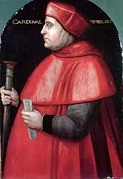




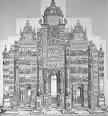



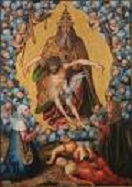
1515 On Jan. 1 king (since Apr. 7, 1498) Louis XII (b. 1462) dies, and Francis (Francois) I (1494-1547), son of his first cousin Charles d'Angouleme (1459-96) becomes French Valois king #9 (until Mar. 31, 1547), the first French Renaissance monarch, and "the father of France's devotion to culture", reigning at the same time as Henry VIII of England, and having to cope with the 1517 Protestant Revolution of Martin Luther too, but not copping out his religion over pretty petticoats like horny I'm Henry the Eighth I Am, staying loyal to the security cams of the Roman Catholic cause; too bad, he fell out with Holy Roman Emperor Charles V, getting in ? wars with him for 38 years (1521-59); his favorite residence is the Palace of Fontainebleau 35 mi. SE of Paris on 200 acres in the 42K-acre Fontainebleau Forest, where he assembles the Fontainebleau School in the 1530s to decorate it; his well-educated brain babe sister Marguerite d'Angouleme (1492-1549) sets up a salon that becomes known as the "New Parnassus", fostering Francois Rabelais (1494-1553), Clement Marot (1496-1544), Pierre de Ronsard (1524-85) et al; Francis I signs an alliance with 15-y.-o. Archduke Charles of Hapsburg (Austria) (1500-58) (future HRE Charles V), who becomes gov. of the 17 provinces of the Netherlands; on Mar. 24 Francis I makes his friend and cousin Count Charles III de Montpensier and de Bourbon, Duke of Chatellerault (1490-1527) the (youngest ever?) constable of France (until 1523); Francis I hires German Landsknecht mercenaries,and makes a brilliant crossing of the supposedly impassable Alps, followed by a brilliant military V on Sept. 13-14 over the Swiss and Venetians at the Battle of Marignano, where the superiority of artillery and cavalry over the supposedly superior Swiss infantry tactics is proven, then a few days later defeats Swiss mercenaries and seizes the Italian duchy of Milan, becoming its gov. (until 1519); after conquering Lombardy, the French make peace with the Swiss on Nov. 12 and with Pope Leo X on Dec. 14; the Swiss retain most of the Alpine passes plus a French subsidy in return for the right of the French to enlist mercenaries; Francis I becomes the first French king to appoint port-chaise-d'affaires (royal porta-potty attendants). On Mar. 3 the Lateran Council issues the decree De Impressione Librorum, requiring the imprimatur (pr. im-pri-MAT-ur) (Lat. "let it be printed") on all books pub. in Roman Catholic lands under penalty of excommunication of the offenders, along with confiscation and destruction of the books. On Mar. 3 after Mary Rose Tudor "the French Queen" returns to England after doing her warming-up-the-old-man thing for her big brother, she secretly marries (his 3rd marriage) her real beau, Henry VIII's master of the, er, horse Charles Brandon, 1st Duke of Suffolk (1484-1545), son of Henry VII's standard-bearer Sir William Brandon (1456-85) (who was slain personally by Richard III on Bosworth Field), and whom had been one of Henry VIII's favorites, called a "second king"; too bad, this act pisses-off Henry VIII, who was still trying to get the promised gold and jewels for his sister's marriage from the French, and the privy council urges the dork's execution for treason until his friend Cardinal Wolsey intervenes, and reminds Henry of his affection for his sister, after which they are heavily fined (£200K, the amount of Mary's dowry from Louis XIII, plus another £24K for the bother), and allowed to officially marry on May 13 in Greenwich Palace; luckily the Anne Boleyn thingie is in the future, for she detests that bitch and sides with Catherine of Aragon, while Brandon is on the king's side? In Mar. Russia forms an alliance with the Livonian Knights, but fails to take Vitebsk. On July 22 the First Congress of Vienna between HRE Maximilian I, Sigismund of Poland, and Vladislav II of Hungary regarding the mutual succesion of the Hapsburgs and Jagellons (Jagiellos) allies the two dynasties, and makes Maximilian I's brother Ferdinand potential heir to the Hungarian throne. On July 25 Spanish navigator Juan de Bermudez returns to Bermuda (first time 1505), leaving a dozen pigs and sows for future stranded mariners. On Sept. 10 archibishop of York Thomas Wolsey (1475-1530) becomes a cardinal; William Warham resigns, and on Dec. 24 Wolsey becomes lord chancellor of England, getting so powerful that the Venetian ambassador calls him "ipse rex" (the king himself). On Dec. 24 after arriving in Seville in Nov., slave-owning Spanish Dominican friar Bartolome de las Casas (1484-1566), who witnessed the extermination of the Arawaks (Tainos) of Cuba in 1513, causing him to flop on the issue of Indian slavery, complaining that "everything done to the Indians thus far was unjust" pleads to Charles V of Spain to replace Indian slaves with more "hearty" African slaves, and a license is given to Lorens de Gominot to import 4K African slaves (four for each Spanish emigrant) to Spanish Am. sugar plantations in the West Indies, causing de las Casas to later be blamed for launching African slavery in the Americas; in 1518 an 8-year monopoly is given by Charles V to La Bresa, who sells it to the Genoese, who buy their W African slaves from the Portuguese. The Scottish parliament names John Stewart, 2nd Duke of Albany (1484-1536) (French son of James III's bad brother Alexander) as protector (gov.) of Scotland (until 1524), who goes on to work with the young king's tutor Gavin Dunbar (1495-1547), archbishop of Glasgow (1524-) to turn him into a Francophile; see-you-tomorrow Queen Regent Margaret Tudor escapes to England. Ottoman Sultan Selim I conquers and annexes E Anatolia and Kurdistan; the Dulkadir principality (founded 1337) is annexed. The Teutonic Order offers Memel to the duchy of Courland in exchange for a peace, ending their war (begun 1511), and causing Courland to double its territory after spending years fighting minor rebellions; too bad, the Martin Luther thingie becomes popular in Courland, causing it to worry how to keep its alliance with Catholic Poland going. A rebellion against Hapsburg rule begins in Frisia in Germany, led by giant super-strong 7' warrior Piers Gerlofs Donia, who keeps his outnumbered army until he lays down his arms in 1520 after never being defeated in battle, and dies the same year in his house in Sneek of natural causes. After they fail to learn their lesson of 1468, the Portuguese again destroy the Morrocan town of Anfa (Casablanca). Florentine prof. of law Francesco Guicciardini (1483-1540), who entered the service of Pope Leo X in 1515 is made gov. of the papal states of Reggio and Modena, followed by Parma in 1521, then vice-regent of Romagna in 1523, lt.-gen. of the papal states in 1526, and gov. of Bologna in 1531. Sugar cane is introduced to Puerto Rico - sugar is expensive, slaves are cheap, ola? The first nationalized factories (for weapons and tapestries) open in France. The city of Santiago de Cuba (modern-day pop. 431K) is founded by Diego Valazquez de Cuellar as the capital of Cuba; next year it burns down, and is rebuilt. Raphael is appointed chief architect of St. Peter's to replace the late Donato Bramante, and is commissioned to replace the 4th cent. church, to create the pope's tomb, and to decorate the ceiling of the Sistine Chapel. Leonardo da Vinci becomes a military engineer attached to the army of Charles III de Montpensier and de Bourbon, constable of France (until 1517). A free grammar school is founded in Wolverhampton, England (13 mi. NW of Birmingham). Architecture: The Elizabethan-style Hampton Court Palace in Richmond upon Thames, London is begun by Cardinal Thomas Wolsey (finished in 1530); after Henry VIII seizes it in 1529, it becomes one of only two palaces owned by the king to survive to modern times along with St. James's Palace. Nonfiction: Gerard of Cremona (tr.), Ptolemy's "Almagest" (Venice); Latin trans.; used by Nicolaus Copernicus in formulating his heliocentric theory. Desiderius Erasmus (1466-1536), Education of a Christian Prince (Institutio Principis Christiani). Fiction: Mutianus Rufus, Ulric von Hutten et al., Epistolae Obscurorum Virorum; a satire of scholarship in dog Latin in support of Reuchlin. Plays: John Skelton (1460-1529), Magnificence. Johann Grieninger of Strasbourg, Till Eulenspiegel. Gian Giorgio Trissino (1478-1550), Sofonisba; first play in blank verse, and first modern tragedy, becoming a model. Art: Fra Bartolommeo (1472-1517), St. Mark the Evangelist (Palazzo Pitti, Florence); his masterpiece?; Undraped St. Sebastian; both painted to prove that he doesn't need to always do small draped figures. Antonio da Correggio (1489-1534), Madonna of St. Francis. Lucas Cranach the Elder (1472-1553), The Holy Trinity in a Glory of Angels (1515-18); shows Christ's pubic hair. Albrecht Durer (1471-1528), Triumphal Arch (24 woodcuts); he had planned on 90, but circumstances?; Marginal Drawings in the Prayer Book of HRE Maximilian I (pen and ink). Gerard David (1460-1523), The Rest on the Flight Into Egypt. Raphael (1483-1520), The Raphael Cartoons (1515-6); seven large cartoons of Gospel scenes for tapestries for Pope Leo X, who commissioned 10 for the Sistine Chapel to hang below Michelangelo's famous celing. Titian (1488-1576), Flora. Leonardo da Vinci (1452-1519), The Deluge; a series of drawings portraying the destruction of the world in a flood. Births: German physician-botanist Valerius Cordus (d. 1544) on Feb. 18 in Hesse (Erfurt?); educated at the U. of Marburg, and U. of Leipzig. Spanish Discalced Carmelite nun and mystical poet ("seraphic virgin") (St.) Teresa de Jesus of Avila (Jesus) (Teresa Sanchez de Cepeda y Ahumada) (d. 1582) on Mar. 28 in Gotarrendura (Avila), Castile; founds 13 monasteries; feast day: Oct. 15; originates the Roman Catholic belief that Mary's hubby Joseph aids home sellers after she buries a medal of him, prays to him, and gets land for convents. Italian Counter-Reformation scholar and cardinal (1592-) ("the Third Apostle of Rome") (St.) Philip (Filippo) Romolo Neri (d. 1595) on July 21 in Florence; founder of the Congregation of the Oratory; feast day: May 26; patron saint of laughter, humor, and joy. English queen (1540) (Henry VIII's wife #4) Anne of Cleves (d. 1557) on Sept. 22 in Dusseldorf; 2nd daughter of Duke John III of Cleves (Cleve) (Kleve) (1490-1538) (leader of German Protestantism) and Duchess Maria of Julich-Berg (1491-1543); sister of Sybille of Cleves (1512-54). Scottish queen consort (1538-42) Mary of Guise (d. 1560) on Nov. 22 in Bar-lde-Duc, Lorraine, France; 2nd wife of James V; mother of Mary, Queen of Scots (1542-87). English politician Sir Nicholas Bacon (d. 1579) on Dec. 28 in Chislehurst, Kent; educated at Corpus Christi College, Cambridge U.; brother-in-law of William Cecil (1520-98); knighted in 1559; foster parent of Sir Francis Bacon. English (Welsh?) "Beware the Cat" novelist-poet-writer William Baldwin (d. 1563) in West Country; educated at Oxford U. French humanist theologian Sebastian Castellion (Catellio) (Chateillon) (Chataillon) (Castello) (d. 1563) in Saint-Martin-du-Frene, Duphine, Savoy; more learned than John Calvin? English humanist scholar Roger Ascham (d. 1568) in Kirby Wiske, Yorkshire; educated at St. John's College, Cambridge U.; first prof. of Greek at Cambridge U. (1540); tutor to Princess (later Queen) Elizabeth (1546-8); secy. to Queen Mary and Queen Elizabeth. Spanish Escorial architect Juan Bautista de Toledo (d. 1567) in Toledo (Madrid?). French #1 Renaissance Mannerist sculptor-architect Jean Goujon (d. 1568) in Normandy. English diplomat Sir Nicholas Throckmorton (Throgmorton) (d. 1571); father of Bess Throckmorton (1564-1647). French Protestant mathematician-philosopher Petrus Ramus (Peter Ramus) (Pierre la Ramee) (Ramée) (d. 1572) in Cuth, Vermandois district of Picardy; of impoverished noble parentage; educated at the U. of Paris; raised a Roman Catholic, he thinks himself out of it in middle age? - I was an ignoramus? English breed mare countess Margaret Stewart Lennox, Countess of Lennox (d. 1578); daughter of Archibald Douglas, 6th earl of Angus and Margaret Tudor (1489-1541) (sister of Henry VIII); wife of Matthew Stewart, 4th earl of Lennox (1516-91). French Louvre architect Pierre Lescot (d. 1578) in Paris. Croatian Ottoman adm. Piyale (Piali) Piasha (d. 1578). Italian anatomist Giambattista Canano (Canani) (d. 1579) in Ferrara. French architect Jacques I Androuet du Cerceau (d. 1584) in Paris; known as Du Cerceau (Fr. "hoop") from a circle sign over his workshop; one of the first to introduce the Italian Renaissance style to France, passing it on to his Parisian-based sons Baptiste du Cerceau (1560-1602), Jacques II du Cerceau (1556-1614), and Jean Androuet du Cerceau (1585-1650), who work on the Tuileries, Louvre, Pont-Neuf, and Chapel of St. Denis. Dutch Mannerist painter Lambert Sustris (d. 1584) in Amsterdam; father of Friedrich Sustris (1540-99); collaborator of Titian (1488-1576); teacher of Girolamo Muziano (1532-92). Dutch "De Praestigiis Daemonium" occultist physician Johann Weyer (Wier) (d. 1588) in Grave; disciple of Heinrich Cornelius Agrippa von Nettesheim (1486-1535). Deaths: Venetian humanist printer-typographer Aldus Manutius (b. 1449) on Feb. 6. Portuguese navigator Alfonso de Albuquerque (b. 1453) on Dec. 16 off the shores of Goa, India. Spanish gen. Gonzalo Fernandez de Cordoba (b. 1453) on Dec. 2 in Cordoba. Spanish explorer Vicente Yanez Pinzon (b. 1461) in Triana, Seville. French king (1498-1515) Louis XII (b. 1462) on Jan. 1 in Paris. Spanish conquistador Alonso de Ojeda (b. 1465) in Santo Domingo.

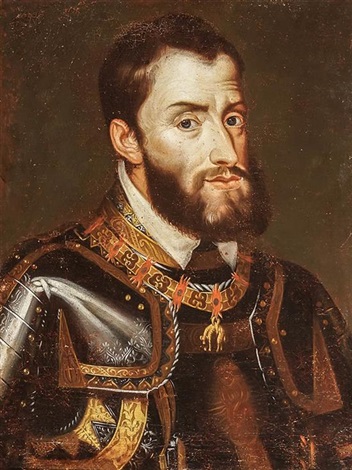












1516 On Jan. 23 Castilian king (since 1474) Ferdinand II of Aragon (Ferdinand V of Castile and Leon) (b. 1452) dies, and his 16-.y.-o. grandson Charles of Burgundy (future HRE Charles V) is crowned Charles (Carlos) I of Spain (1500-58) (until Aug. 27, 1556), founding the Spanish Hapsburg (Habsburg) Dynasty (ends 1700); his mother Joanna (Juana) the Mad (1479-1555) becomes nominal joint ruler of Castile, even though she spends the rest of her life in the castle of Tordesillas doing who knows what with her hubby's remains; Charles I grants licenses to the Flemings to transport African blacks to the Am. colonies - the original Psycho? In Feb. Catherine of Aragon, after a stillborn daughter, a short-lived son, another miscarriage, and another short-lived son Henry (less than 2 mo.) (he jousted before her in a surcoat and horse trappings embroidered with her initials) to celebrate his birth) gives birth to Mary Tudor (1516-58), Henry VIII's first child, who grows up to carry on her grandmother's Catholic blood sports - like the new Dirt Devil, with more power and suction? On Mar. 13 Ladislas II Jagiello (b. 1456) dies, and his 10-y.-o. son Louis II Jagiello (1506-26) becomes king of Bohemia and Hungary, and the last of the Jagiello line. On Apr. 23 to stop widespread adulteration, Bavarian duke (1508-50) William IV (1493-1550) issues his Reinheitsgebot (Beer Purity Regulations) before a committee in Ingolstadt, declaring that only barley, hops and water can be used, later allowing yeast and wheat; in 1987 the law is ruled not to apply to imported beer; in 1993 the Vorlaufiges Biergesetz (Provisional Beer Law) is passed, expanding the Reinheitsgebot to pemit more ingredients; later, due to microbial infections in summertime, William IV's successor (1550-79) Albert (Albrecht) V (1528-79) prohibits all brewing between Apr. 23 and Sept. 21, causing only lagers to be brewed; meanwhile William IV makes his younger brother Louis X (1495-1545) co-duke of Bavaria, spliiting Bavaria until 1545. On Aug. 13 Charles I of Spain signs the Peace of Noyon, giving Milan to France, ending the War of the Holy League (League of Cambrai) (begun 1508); Massimiliano is expelled from Milan by the French and Venetians; meanwhile, broken by the defeat at Marignano, the Swiss make peace with France and negotiate the Treaty of Freiburg and Perpetual Alliance, and neutrality becomes the official policy; Duke Charles III of Bourbon fails to be paid by Francis I for his war expenses, and gradually turns against him, while Francis I and Charles I become mortal enemies for the next 27 years, while Spain enters its Golden Age (ends 1659) - never mix bourbon and burgundy? Jerusalem changes hands for the ???th time, this time for four centuries? On Aug. 24 the Ottomans under Selim I defeat the Mamluks at the Battle of Marj Dabiq (Marjdabik) (Marg Dayek) 26 mi. N of Halab (N of Aleppo) in Syria; the Morons, er, Mormons, er, Mamluks refuse to use gunpowder and artillery, calling it a "dishonorable weapon", relegating it to inferior units while taking on the Ottomans with valor and elan instead; Selim I then takes Aleppo, followed on Sept. 26 by Damascus, then Palestine, incl. Jerusalem (3rd most holy city in Islam) on Dec. 28; the Mamluk empire in Syria (founded 1250) ends, and the gunpowder-toting Automatic Ottomans rule the roost; on Dec. 30 Sultan Selim I secretly visits Jerusalem for devotions, then annexes all of Syria and moves on to Cairo. In Aug. Henry VIII has the 1290 Round Table of Arthur in the Church of Winchester repainted by an artist from Southampton, with his own face for Arthur, believing that the Welsh Tudors are a fulfillment of the prophecy that Arthur will rule England again; he also has visions of becoming HRE until his split with the pope; too bad, when he later begins destroying the old Medieval Catholic culture of England he has the bones of Arthur and Guinevere in Glastonbury destroyed - which makes Arthur un-PC among the Tudors, becoming the reason that S hakespeare never writes a play about him? The Poles take Velikiye Luki and Toropets from the Russians. The Concordat of Bologna between Francis I and Pope Leo X rescinds the Pragmatic Sanction of 1438, and strengthens French royal power over the Church, securing their internal independence in ecclesiastical appointments - does this concordat of baloney later strengthen the Protestant cause in France, or defuse it? After the Spanish establish themselves on a small island in front of Algiers, an force local ruler Salim al-Tumi to sign a peace treaty, pay tribute, and take an oath of obedience to Ferdinand II of Aragon, Algiers is captured and al-Tumi assassinated by Ottoman brothers Oruc Barbarossa and Haydreddin Barbarossa, who are sent by Sultan Selim I. Pope Leo X avoids an assassination attempt by his own cardinals. Ponhea Chan (d. 1566) becomes king of Khmer (Cambodia) (until 1566). The last secular prince of Montenegro resigns and transfers the civil govt. to the Greek Orthodox Catholic bishop (vladika) of Montenegro. Venice reacquires its Italian dominions lost to the League of Cambrai by diplomacy, although it is kaput as a political power, which doesn't stop it from requiring Jews to move from Ghetto Vecchio (old ghetto) near a copper foundry to the Ghetto Nuovo (new ghetto) on the island of Carregio, becoming the first use of the term "ghetto. Leonardo da Vinci's patron Giuliano de' Medici dies, and in 1518 he moves to the Chateau of Cloux connected to the Palace of Cloux near Amboise (near Tours) after Francis I hires him as "first painter and engineer and architect of the king"; his former boss Charles III de Montpensier lives in Amboise; too bad, he begins suffering paralysis in his right hand. Francesco Maria I della Rovere is excommunicated and ousted from Urbino by Pope Leo X in favor his nephew Lorenzo II de' Medici, causing Rovere to plot a comeback. Franz von Taxis is made postmaster gen. of the Netherlands, and imperial mail service is extended to Naples and Rome. After serving as chaplain with mercenaries from his Swiss parish of Glarus, Ulrich Zwingli denounces the mercenary system and is forced out by the town officials to Einsiedeln 20 mi. SE of Zurich, where he reads Erasmus' Latin trans. of the New Testament and is so turned on that he memorizes it, becoming a Bible-thumping Protestant. Martin Luther gives a sermon in which utters the soundbyte: "To assert that the pope can deliver souls from purgatory is audacious. If he can do so, then he is cruel not to release them all." Spanish explorer Juan Diaz de Solis (1470-1516) reaches the mouth of the Rio de la Plata (Sp. "silver river") (confluence of the Uruguay and Parana Rivers) region of South Am., and discovers "Purple Land" Uruguay (filled with small purple flowers); he later is killed with his landing party on the banks of the river by fierce dark heavy-set semi-nomadic Charrua aborigines while searching for a passage to the Pacific Ocean; the Charruas get their hackles up and prevent colonization until 1624, adopting horses and bolas until they are finally exterminated by the first pres. of Uruguay in 1831. The first loaves of sugar are presented to Carlos I of Spain by Hispaniola's inspector of gold mines. Franciscan missionary Fra Tomas de Berlanga introduces wheat, oats, and bananas into Hispaniola. The Portuguese introduce maize into China. Dyestuff indigo arrives in Europe. Giovanni Bellini (b. 1430) dies, and Titian becomes official painter of Venice with a pension, spending two years to produce his gorgeous Assunta (Assumption of the Virgin), which makes him #1 in N Italy. The Mamluk/Late Arab Period in archaeology ends, and the Ottoman Period begins (ends 1917). Tekkiyeh Mosque on the bank of the Barada River W of Damascus is begun as a refuge for poor pilgrims. Inventions: Engraving of music on plates is used for the first time in Italy. Italian wood engraver Ugo da Carpi (1455-1523) writes a Letter to the Venetian Senate claiming to have invented chiaroscuro engraving, although it was practiced earlier in Germany. The first recorded use of the Iron Maiden for torture is on Aug. 14 on "a forger of coins... placed inside, and the doors shut slowly, so that the very sharp points penetrated his arms and legs in several places, and his belly and chest, and his bladder and the root of his member, and his eyes, and his shoulders, and his buttocks, but not enough to kill him; and so, he remained making great cry and lament for two days, after which he died"; actually German philosopher Johann Philipp Siebenkees (1759-96) makes up the story in 1793, and they're not actually used until the 19th-20th cents.? Nonfiction: The infallible Word of God of Protestant Bible-thumpers gets off to a fallible start? In Oct. Desiderius Erasmus pub. ("rushes out rather than edits") ("praecipitatum verius quam editum") the Textus Receptus (Lat. "received text") of the New Testament (Novum Instrumentum Omne), with side-by-side Greek and Latin text, becoming the first Bible divided into verses; the first ed. uses the Latin Vulgate, which the Church considers as "their" Bible, but in later eds. he pisses-off Roman Catholics by using his own Latin trans. of the Greek in its place; he uses a small set of late medieval (12th cent.) mss. found in Basel, plus a ms. of St. John's Revelation borrowed from friend Johannes Reuchlin, which is hard to read and is missing the final six verses, causing him to fill in from the Latin Vulgate, creating a bastard Greek ms., which is later used to prepare the King James version; he pisses-off the Trinitarians by not incl. the Johannine Comma (Comma Johanneum) (Heavenly Witnesses) in 1 John 5:7-8: "There are three that bear witness in heaven: the Father, the Word, and the Spirit, and these three are one; and there are three that bear witness on Earth, the Spirit, the water, and the blood, and these three are one", because it is not found in Greek mss., only "There are three that bear witness: the Spirit, the water, and the blood, and these three are one", but later tickles the Trinitarians pink by incl. it in later eds. after they give him a fake Greek ms. in which they insert it themselves?; he goes on to pub. four more eds. by 1535, which become the "editio princeps" used by W European printers for the next three cents.; English royal physician Linacer (a Roman Catholic) gets and reads a copy, then exclaims "Either this book is not true, or we are not Christians" (a true Protestant in the making?). Sir Anthony Fitzherbert, La Grande Abridgement (Old French legal cases). Peter Martyr d'Anghiera (1457-1526), Decades; New World discoveries. The original I Have a Dream? Sir Thomas More (1478-1535), Utopia (Gr. "no place" - pun on "good place"); Amerigo Vespucci crewmember Ralph Hythlodaye tells about his visit to an island where land is owned in common by the snobs (with plenty of slaves for the menial work), everybody has a job, and there is universal education and religious toleration, contrasting this perfect society with the hellhole of England; it recommends penal slavery instead of death as a punishment for crimes, eventually spawning the English Poor Laws, and becomes the father of Communism?; influences Nostradamus?; since More wears an itchy-scratchy goat hair shirt for most of his life, judge it by the source? Pietro Pomponazzi (1462-1525), De Immortalitate Animae. Music: Josquin des Pres (1450-1521), Third Book of Masses (Missa sine Nomine). Novels: Ludovico Ariosto (1474-1533), Orlando Furioso; boastful Saracen leader Rodomonte inspires the word "rodomontade" to be coined. Poetry: Garcia de Resende, Cancioneiro Geral, an anthology of Portuguese and Spanish poems. Art: Fra Bartolommeo, Pieta; in Palazzo Pitti, Florence. Raphael (1483-1520), The Sistine Madonna. Titian (1488-1576), The Assumption of the Virgin (Assunta) (1516-18) (San Nicolo dei Frari, Venice); some of the figures reach almost 9 ft. tall; famous for her vivid red robe; the work that gives Titian an internat. rep. Births: English Roman Catholic Tudor queen (last) (1553-8) (first reigning queen of England) "Bloody" Mary I (d. 1558) on Feb. 18 in Placentia Palace, Greenwich; daughter and only child of Henry VIII (1491-1547) (who names her after his sister Mary Tudor) and Catherine of Aragon (1485-1536); first child to survive infancy, incl. a stillborn sister and three brothers; half-sister of Edward VI (1537-53); granddaughter of Ferdinand II and Isabella I of Spain; wife (1556-) of Philip II of Spain (1527-98). Portuguese politicial advisor (to Philip II) Ruy Gomez de Silva (Rui Gomes da Silva) (d. 1573) on Oct. 27 in Chamusca; husband (1553-73) of Ana de Mendoza, princess of Eboli (1540-92); starts out as Philip II's page boy. Italian anatomist Renaldus Columbus (Realdo Colombo) (d. 1559) in Cremona, Lombardy; educated at the U. of Padua; pupil of Vesalius, and pioneer in the theory of pulmonary circulation; discoverer of the clitoris? German-Swiss naturalist-zoologist Konrad von Gesner (d. 1565). Flemish (Dutch) composer Cyprien de Rore (d. 1565). Scottish regent (of James VI) James Douglas, 4th Earl of Morton (d. 1581). English "Foxe's Book of Martyrs" Protestant clergyman-historian John Foxe (d. 1587) in Boston, Lincolnshire; educated at Brasenose College, Oxford U. Deaths: Italian artist Giovanni Bellini (b. 1430). Italian sculptor-architect Giuliano da Sangallo (b. 1443). Dutch painter Hieronymus Bosch (b. 1450). Spanish king Ferdinand II/V the Catholic (b. 1452) on Jan. 23 in Spain. Bohemian-Hungarian king (1490-1516) Vladislav II Jagiello (b. 1456) on Mar. 13 in Buda, Hungary. German polymath Johannes Trithemius (b. 1562) on Dec. 13 in Wurzburg. Italian painter Giovanni Antonio Beltraffio (b. 1467).







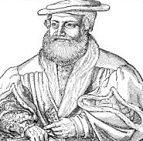

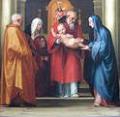

1517 On Jan. 20 the Ottomans under sultan (since May 26, 1512) Selim I Khan "the Grim" (1465-1520) conquer and sack Cairo, and finish conquering Egypt from the Mamluks, occupying Cairo on Apr. 13, after which they conquer Mecca and the other holy places of Arabia, even (gasp) Nazareth; the Mamluk Empire (founded 1250) is kaput, but the Mamluks are retained as an Egyptian ruling class as vassals; Yemen is annexed to the Ottoman Empire; Grim I becomes the first caliph of the entire grim Islamic world. On Jan. 23 after hiring away 6K Venetian troops sieging Verona, Francesco Maria I della Rovere recaptures Urbino from papal condotierro Francesco del Monte, causing Pope Leo X to hire a 10K-man army under Lorenzo II de' Medici to get it back; on Apr. 4 Lorenzo is wounded by an arquebus while sieging Mondolfo Castle, and is replaced by Cardinal Bibbiena, who is defeated at the Battle of Monte Imperiale and retreats to Pesaro; too bad, Rovere runs out of money to pay his troops, and in Sept. he signs a treaty with the pope allowing him to retreat to Mantua with his artillery along with the famed Urbino library - I have an amazing fund of useless information which serves me very well at dinner parties? The original Meet the Fuggers II? On Mar. 16 Pope Leo X's Fifth Lateran (18th Ecumenical) Council closes after ending the Pisan Schism (begun 1511) along with the Jewish and Italian monopoly on moneylending, overturning the Church's prohibition on usury. On May 1 the Evil May Day Riots riots see London apprentices fall on French residents, causing the English govt. to intervene and suppress them; Cardinal Wolsey orders 16 rioters hung, but hundreds more are pardoned by "Bluff Harry the King". On May 17 archbishop-elector Albrecht of Mainz gives force to Pope Leo X's 1515 bull requiring imprimaturs for pub. books - too late to stop the Reformation? On June 11 Sebastian Cabot and Sir Thomas Pert discover Hudson Bay. On July 1 the first burning of Protestants at the stake goes to the eternal honor of the Netherlands; the same day inquisitor Adrian Boeyens (later Pope Adrianus VI) becomes a cardinal. On Aug. 26 the Treaty of Rouen is signed by France and Scotland; Scottish bishop Gavin Douglas goes to France to arrange the marriage of 5-y.-o. James V to Princess Madeleine, daughter of Francis I. On Sept. 18 Flanders-educated Archduke Charles, having assumed the title of king Charles I of Castile arrives in Spain from the Netherlands with a large Flemish retinue, makes a triumphal entry into Valladolid, then proceeds to alienate most of the pop. with his haughty disdain, starting with making his former tutor Guillaume (William) de Croy, Lord of Chievres (Chièvres) (1458-1521) his chief minister of Spain on the death of Cardinal Jimenez, and granting a monopoly on the African Negro slave trade to Flemish merchants. On Sept. 20-Oct. 18 a Lithuanian-Polish expedition to Pskov under Konstanty Ostrogski and Jerzy Radziwill ends in defeat to the Russians at the Siege of Opochka; meanwhile the Crimean Tartars devastate Russian territories again; Russia annexes the town of Ryazan on the Oka River. With Catholic indulgences, crime does pay? The papal quest for filthy lucre finally reaps public reaction, creating the Protestant schism? On Oct. 31 (Wed.) (Halloween or All Hallows' Eve) German Roman Catholic Augustinian friar Martin Luther (1483-1546), after becoming sick of the indulgences peddled by Dominican friar Johann Teufel, er, Johann Tetzel (1465-1519) et al., and convinced that 1517 marks the end of the Babylonian Captivity of the Congregation, nails his Ninety-Five (95) Theses (Disputation on the Power of Indulgences) (written in in Latin) to the door of the Wittenberg Palast (Palace) (Castle) Church in Saxony on the Elbe River (known for housing 5K+ holy relics, which he detests), arguing against indulgences and other Roman Catholic Church abuses, starting out pulling his punches then within a few years claiming that the pope is the Antichrist, "and his seat is that of Satan himself", and that "The treasures of indulgences are nets with which they now fish for the wealth of men", igniting the already-smoldering Protestant Reformation (he could have picked a more PC date than Halloween?); he really just sent them to Mainz archbishop Albert of Brandenburg that day, then posted them on the church door sometime in mid-Nov.?; his offer of a public debate is declined, but his theses are soon translated from Latin to German and pub., causing the German middle and merchant classes, who are already chafing at Italian efforts at domination to rise to his support in reaction to the fugging Fuggers (successor to the Medicis) and other papal bankers who are draining Germany of gold for Rome with this holy racket (the Fuggers are behind the loans made by Albert of Brandenburg to the pope); the big revelation to Luther that gave him strength was from the Bible, incl. the Seven Trumpets in Rev. Ch. 8, and Rev. 13:5, where it says that the Antichrist will rule the world for 42 mo., which he turns into 1260 years instead of days, setting year 1 in 539 C.E., and claiming that Christ will therefore return in the year 1799, thus it's time to get started whipping things up? - the wildlife experience, more than a museum? In Oct. after Manuel I of Portugal rejects him, Portuguese navigator Ferdinand Magellan (1480-1521) gets Charles I of Spain (later HRE Charles V) to sponsor a voyage to Asia by way of South Am., financing it with 8,751,125 gold maravedis and naming him captain next Mar. 22 with a 10-year monopoly and a 20% cut, leaving in search of the Spice Islands in July; little did he know how large little old Asia is? Pope Leo X issues a bull calling for a 5-year peace in Christendom. On Feb. 8 Spanish conquistador Francisco Hernandez de Cordoba (Francisco Hernández de Córdoba) (-1517) leaves Havana in three ships with 100 men, and lands on the Yucatan Peninsula while on a slave-hunting expedition from Cuba, discovering traces of the once-great Mayan civilization;he gets the name Yucatan straight from the local Mayans, who reply "Yukatan" ("I don't understand you") when he asks them their name?; an attempt by Hernan Cortes to defame his rival Diego de Velazquez in a letter to the king of Spain, the Nahuatl word "Yokatlan" meaning "place of richness" all along? After claiming to see a "column of fire", St. Cyril of Novozeno founds a Russian Orthodox monastery on Ongenny Ostrov Island (Russ. "Fiery Island") on beautiful White Lake in the Vologda region of C Russia; after the Oct. 1917 Russian Rev. it is converted into a prison by the Bolsheviks, with small inhuman 2-man cells that prisoners must stay in for 22.5 hours/day. The Portuguese found a factory in Colombo, Ceylon - any orange pekoe and pekoe? The Portuguese reach Canton, China by sea. Coffee arrives in Europe for the first time - that first cup? Spanish courtier and skirt-chaser Ignatius Loyola (1491-1556) begins military duty under Antonio Manrique de Lara, viceroy of Navarre. Ludwig Senfl replaces Isaak as court composer to Maximilian I. Hans Sachs (1494-1576) settles in Nuremberg, becoming leader of the Nuremberg Meistersingers - there's a party tonight? HRE Maximilian I crowns Ulrich von Hutten (1488-1523) the "King of Poets". Corpus Christi College in Oxford U. is founded by English prelate-statesman Richard Foxe (1448-1528) for the advancement of classical education; next year its chapel is built, complete with an altar designed by Rubens; it goes on to produce theologians Reginald Pole, John Jewel and Richard Hooker, and educator Thomas Arnold. The College des Trois Langues (Collegium Trilingue) (College of Three Languages) in Louvain (Leuven), Belgium is founded by the will of humanist Joeroen van Busleyden (Hieronymus Buslidius) (1470-1517), friend of Erasmus. Science: Polish Renaissance mathematician-astronomer Nicolaus Copernicus (1473-1543) turns economist and pub. the first known argument for the Quantity Theory of Money; in 1519 he pub. the first known version of Gresham's Law, that bad money drives out good, which is 1858 is named after English financier Sir Thomas Gresham (1519-79) by Scottish economist Henry Dunning Macleod (1821-1902). Girolamo Fracastoro explains fossils as the remains of living organisms, but questions that they all came from Noah's flood - he goes too far up the family tree in his search of genealogy? Nonfiction: Anon., The Rabbinic Bible; contains a special "anti-Christian polemic" page by David Kimhi. Hans von Gersdoff, Feldtbuch der Wundtartzney; first depiction of an amputation, recommending use of a tourniquet - we'll have to take your hands and gersd off? Johann Reuchlin (1455-1522), De Arte Cabbalistica. Art: Fra Bartolommeo (1472-1517), Christ in the Temple. Matthias Grunewald (1465-1528), Maria Schnee Chapel Altarpiece (Aschaffenburg). Quentin Massys, Portrait of Erasmus. Sebastiano del Piombo, Raising of Lazarus. Raphael (1483-1520), Lo Spasimo. Andrea del Sarto (1486-1531), Madonna of the Harpies. Plays: Bartolome de Torres Naharro, Propalladia; seven Spanish comedies. Poetry: Teofilo Folengo (1496-1544), Opus Maccaronicum; satirical Latin poems on contemporary romantic epics. Henry Watson, The Grete Shyppe of Fooles of the Worlde (2 vols.); tr. of Sebastian Brant's 1494 work. Births: English Protestant courtier Henry Grey, 1st Duke of Suffolk, 3rd Marquess of Dorset (d. 1554) (AKA Marquess of Dorset) on Jan. 17; son of Thomas Grey (1477-1530); great-grandson of Elizabeth Woodville (queen of Edward IV); husband of Frances Brandon (1517-59), daughter of Henry VIII's sister Mary Tudor (1495-1533) and Charles Brandon, duke of Suffolk (1484-1545); father of Lady Jane Grey (1537-54), Katherine Grey (1540-68) and Mary Grey (1545-78); makes Leicestershire solidly Protestant. Japanese emperor #106 (1557-86) Ogimachi (d. 1593) on June 18; eldest son of Go-Nara (1497-1557). Belgian botanist Rembert Dodoens (Rembertus Dodonaeus) (d. 1585) on June 29. French cardinal (1561-) and statesman ("dominating imperial statesman of the whole century") Antoine Perrenot de Granvelle (d. 1586) on Aug. 20 in Besancon; son of Nicolas Perrenot de Granvelle (1484-1550), chancellor under HRE Charles V. English soldier-poet Henry Howard, 4th Duke of Norfolk and 3nd Earl of Surrey (d. 1547); son of Lord Thomas Howard, 3rd duke of Norfolk (1443-1524). French naturalist (founder of marine biology) Pierre Belon (Petrus Bellonius Cenomanus) (d. 1564) near Le Mans (Sarthe). English lord Henry Clifford, 2nd Earl of Cumberland (d. 1570) in Skipton, Yorkshire; husband of Eleanor Brandon (1519-47), daughter of Henry VIII's sister Mary Tudor (1495-1533) and Charles Brandon, duke of Suffolk (1484-1545); father of Margaret Clifford (-1596). Dutch Flemish painter Frans Floris (Frans de Vriendt) (d. 1570) in Antwerp; son of Cornelis I de Vriendt (-1538); brother of Cornelis Floris de Vriendt (1514-75). Italian musical theorist Gioseffo Zarlino (d. 1590) in Chioggia, Venetia. English bishop-theologian-lexicographer Thomas Cooper (Couper) (d. 1594) in Oxford; educated at Magdalen College, Oxford U. Irish archbishop (of Dublin) James Beaton (d. 1603). Deaths: Spanish cardinal Francisco Jimenez de Cisneros (b. 1436) on Nov. 8. German-Dutch composer Heinrich Isaac (b. 1450) on Mar. 26. Moldavian prince (1504-17) Bogdan III the One-Eyed (b. 1504). Dutch humanist Joeroen van Busleyden (b. 1517) on Aug. 27 in Bordeaux. Italian painter Fra Bartolommeo (b. 1472) on Oct. 6 in Florence.

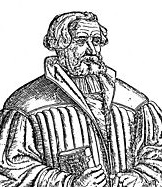









1518 Pop. of Aztec Mexico: 30M; by 1568 this is down to 3M. On Apr. 8 Spanish conquistador Juan de Grijalva (1489-1527) sails with 170-300 people on four ships from Matanzas, Cuba to Yucatan, discovering Cozumel and arriving on May 1 in Tobasco, where he first observes cigarette smoking, renaming the Tobasco River Rio Grijalva, then discovers Mexico and names it New Spain to thank them for not smoking; on Dec. 18 the Spanish start a smallpox epidemic among the aborigines in Santo Domingo, which soon spreads to Yucatan, Mexico, and Peru, ultimately killing 20M (50%-90% of the indigenous pop.), and clearing the way for smoke-free Euros. In mid-July the Dancing Plague of 1518 hits Strasbourg, France, starting with Frau Troffea and growing to three dozen in a week and 400 by Aug. ,until it fades in Sept. In July after he has been raiding E Abyssinia for 25 years, always choosing Lent so that the Christian Ethiopians will be weak from fasting, the Ethiopians under emperor (since Aug. 13, 1507) Dawit II skip the observance of Lent and ambush and kill Emir Mahfuz of Adal, causing Dawit II to adopt the style "Wanag Segad", meaning "to whom lions bow"; meanwhile a Portuguese fleet burns the former Adal capital of Zeila in Somalia. On Oct. 2 the Battle of Brannkyrka sees Gustavus Wasa and several Swedish nobles captured by the Danes and held hostage. In Oct. the Peace (Treaty) of London, a non-aggression pact between England, France, the HRE, Spain, and Pope Leo X is devised by Cardinal Wolsey, who wants to get all 20 leading states of Europe to end warfare; too bad, the peace is broken in a few years with wars between Denmark and Sweden, and England and Spain against France, but a pan-European peace movement gets started and picks up steam, culminating in the 1815 Congress of Vienna. Martin Luther is summoned by Cardinal (since 1517) Thomas Cajetan (Gaetanus) (Thomas or Tommaso de Vio) (Jacopo Vio) (1469-1534) to the Diet of Augsburg, where he refuses to recant and appeals to Pope Leo X, causing papal nuncio Karl von Miltitz (1490-1529) to mediate; meanwhile Johann Eck pub. Obelesci (Obelisks), attacking Luther, which are answered by Andreas Rudolph Bodenstein von Karlstadt (Carlstadt) (Karolostadt) (AKA Brother Andrew) (1486-1541), who challenges him to a debate, which is held next June. Tommaso de Vio of Gaeta (AKA Cajetan or Gaetanus) (1469-1534) (not to be confused with Theatines founder St. Cajetan). The Siege of Polotsk by the Russians is broken after Lithuanian forces allegedly have a sighting of their patron saint St. Casimir Jagiellon (1458-84). Catherine of Aragon's last recorded miscarriage happens this year. After capturing Tenes, Ottoman adm. Oruc Barbarossa captures Tlemcen in NW Algeria, whose sultan flees to Morocco, giving Oruc control of the country behind the Spanish base of Oran 70 mi. away, threatening their supply routes; too bad, the Spanish counterattack, killing Oruc and regaining the Tlemcen region, only to see the red-bearded king Arouj of Morocco lead an army that expels them; too bad, Arouj is KIA in a battle with the Spanish, causing his brother Khair-ed-Din to appeal to the Turkish sultan for help, and after they drive the Spanish out of N Africa, he is appointed rep. of the Barbary States of Algiers and Tunis (modern Algiers and Tunisia), with HQ in Algiers, which with Tripoli (Libya) and Tangier (Morocco) (AKA the Barbary or Berber Coast) send pirate corsairs into the Mediterranean until the 19th cent., intercepting ships and holding hostages for ransom (Muslim jizya) - ending up as a Las Vegas casino? Thomas More, having worked his way up with Henry VIII becomes a member of the privy council; Thomas Wolsey is appointed Pope Leo X's legate a latere (confidential rep.) in England, which gives Henry VIII ideas about using him to rid himself of his menopausal Portuguese wife? Diego de Velazquez is appointed gov. of Cuba by the king of Spain; he and Hernán (Hernan) Cortes (1485-1547) organize a military expedition to Mexico, with Cortes countermanding Velazquez's orders and following the coast of Yucatan, clashing with Indians in Tabasco and reaching San Juan de Ulua (Ulúa) on the Gulf of Mexico near modern-day Veracruz; the Tabasco natives give Cortes several hot women, incl. Malitzin (Doña Marina) (Malinche), a Mexican slave who speaks Mayan and Nahuatl and becomes his common-law wife and official interpreter. The Muslim Bahmani Kingdom of the Deccan in India divides into the five sultanates of Ahmadnagar, Barar, Bidar, Dijapur, and Golkonda, and begin a push against the Hindu Vijayanagara Kingdom to the S. Mahmud of Bidar, India dies, and minister Kasim Barid continues in power, plotting for his dynasty to mount the throne (1527). The Franciscans come to Goa - the Indians wish they'd come and goa? Henry VIII of England presents 400 battle mastiffs to Charles I of Spain (HRE Charles V). The Mayan town of Tulum ("wall") on the E side of the Yucatan Peninsula is first mentioned by Juan Diaz, a member of Juan de Grijalva's expedition; cliff ruins survive to modern times, becoming a popular destination for tourists, esp. Yoga lovers. Porcelain is imported to Europe from E Asia; by modern times Limoges, France becomes a great place for porcelain hunters. The Royal College of Physicians in London is founded by charter from Henry VIII by physician Thomas Linacre (1460-1524), becoming the oldest medical inst. in England. Melanchthon becomes prof. of Greek at the U. of Wittenberg. Ariosto arranges regular performances at the court theater of Ariosto. Kronen (Ger. "crown") Brewery in Dortmund, Germany is first mentioned; in 1845 it converts to lager brewing; in 1871 it introduces Dortmund Export. Inventions: Spectacles for the shortsighted are developed by ?. Nonfiction: Anon., The Secret Grimoire of Turiel; the 18th watcher of the 20 leaders of the 200 fallen angels mentioned in the Book of Enoch. Martin Fernandez de Enciso (1470-1528), Suma de Geografia que Trata de Todas Las Partidas del Mundo; first pub. description of the avocado, which he says is grown near Santa Marta, Colombia. Desiderius Erasmus (1466-1536), Colloquies; ironic examination of religious practices with hidden meanings for the learned; 13 eds. are pub. by 1533, expanding to 50 colloquies. Henry of Ghent (1217-93), Quodlibeta (posth.) (Paris). Adam Riese (1492-1559), Practical Arithmetic. Johannes Trithemius, Cryptography; first book on the subject? Art: Albrecht Altdorfer (1480-1538), St. Florian (altarpiece). Antonio da Correggio (1489-1534), Diana Returning from the Chase (Abbess' Salon, Convent of San Paolo, Parma). Dosso Dossi (1483-1542), Jupiter, Mercury and the Virtue. Albrecht Durer (1471-1528), Portrait of Jakob Fugger. Raphael (1483-1520), Portrait of Pope Leo X with Cardinals; La Fornarina (1518-9); The Transfiguration (1518-) (last masterpiece). Il Sodoma (1477-1549), St. George and the Dragon. Veit Stoss (1438-1533), Annunciation and Seven Joys of the Virgin (wood sculpture in the Lorenzkirche in Nuremberg). Titian (1488-1576), The Tribute Money. Births: German Lutheran theologian Johann Funck (Funk) (Funccius) (d. 1566) on Feb. 7 in Wohrd (Nuremberg); educated at the U. of Wittenberg. French caged (1526-9) dauphin Francis III, Duke of Brittany (d. 1536) on Feb. 28; eldest son of Francis I (1494-1547) and Claude (1499-1524) (daughter of Louis XII). Dutch Flemish composer Ihan Gero (d. 1583). Venetian painter Jacopo Robusti, "Il Tintoretto" (Ital. "The Little Dyer") (d. 1594). Deaths: Hindu poet and religious reformer Kabir (b. 1440). Italian celeb mistress Vannozza dei Cattanei (b. 1442) on Nov. 24. Spanish gov. (of Hispaniola) Nicolas de Ovando (b. 1460) on May 29 in Madrid - RIP?




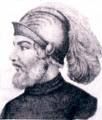



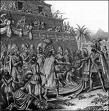



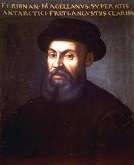
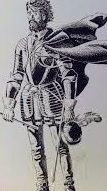
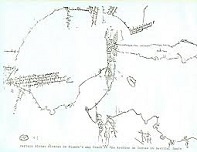




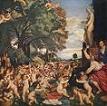
1519 Wherever we go that's where the party's at? On Jan. 1 Ulrich (Huldrych) (Huldreich) Zwingli (1484-1531) is appointed priest of the Great Cathedral (Grossemunster) in Zurich, Switzerland, starting the Protestant Reformation in Switzerland (basis for the later Puritans, Pilgrims, and Huguenots) with popular lectures based on Erasmus' new and improved translations of the Bible, causing an admirer to place his printing press at his disposal; meanwhile Zwingli encounters the writings of Martin Luther, forming a cross-country connection, making the Protestants really dangerous? On Jan. 12 after clashing with Panama gov. Pedro Arias de Avila, Vasco Nunez de Balboa (b. 1474) is framed then beheaded for treason - tresor chocolat? On Jan. 12 HRE Maximilian I (b. 1459) dies, and on June 28 his 19-y.-o. grandson Charles of Hapsburg (Charles I of Spain) is elected over Francis I of France as HRE Charles V (1500-58) (until Aug. 27, 1556); this ultimate lucky dude speaks German, Spanish, Italian, French and Flemish, but despite this he promotes the Inquisition in the Netherlands, which becomes "much more pitiless than that of Spain" (Philip II); the Spanish pop. is opposed to his leaving the country with Spanish men and money, fomenting the Comunero Revolt next year. In Feb. Spanish conquistador Hernan Cortes (Hernán Cortés) (1485-1547) renounces the authority of Diego de Velazquez, relocates the city of Havana (from the Indian name Guanabacoa meaning "site of the waters") in Cuba to the N coast as a Spanish naval base (modern-day pop. 2M), then takes off with on 11 ships with 400-600 men (70 musketeers, 40 crossbowmen, and several hundred Indian and Cuban servants), incl. 2nd-in-command Pedro de Alvarado y Contreras (1495-1541) and chronicler Bernal Diaz del Castillo (1496-1584) for New Spain (Mexico), and on Apr. 21 he lands in Veracruz with his well-armed men, 16 horses, 14 pieces of artillery, and a big pair of balls, and founds the city of Villa Rica de la Veracruz (Vera Cruz) (Sp. "true cross") (modern-day pop. 520K/702K) in Mexico after burning his own ships to keep his men from returning to Cuba; after his soldiers elect him as chief magistrate and send reps to the crown for confirmation, Cortes leaves a small garrison then begins travelling through Aztec villages, finding altars piled with skulls and smelling of rotten blood mixed with flowers while sending envoys to Emperor Montezuma (Moctezuma) II (1480-1520, who is zapped out by the belief that these white dudes are gods and Cortes is pale-faced feathered-serpent man-god Quetzalcoatl (whose arrival is predicted by the Mayan priests this year after some lost Viking stumbled ashore long ago?), and avoids confrontation; Cortes gains support from the Totonacs, then ends up in 11K-ft. mountains where their clothing is inadequate, and several servants die, then crosses desert salt lakes without food and water, until he comes to the independent city of Tlaxcala, and faces 149K fierce warriors with obsidian clubs and spears, holding out for two weeks on a little hill until they suddenly give up, welcome him as a friend, and offer him their daughters, then offer to help him fight their worst enemies the Aztecs (Mexica); on Mar. 12 Cortes and his men arrive in Potonchan (Potonchán) on the left bank of the Grijalva (Tabasco River), finding them hostile, after which on Mar. 25 they win a V over the Aztecs at the Battle of Centla, where Diego de Ordaz (1480-1532) distinguishes himself, going on to climb 17,802 ft. (5,426m) Popocatepetl (Popocatépetl) in C Mexico 40 mi. SE of Mexico City with two comrades, becoming the first white Euros, impressing Cortes native allies, after which HRE Charles V authorizes Ordaz to pus the volcano on his coat of arms; after passing through the narrow streets of Cholula (known for its Great Pyramid) Cortes and his men meet fierce resistance, incl. rooftop ambushes, and kill 3K and sack it, the news reaching Montezuma, who says his heart is "washed in chilies" with grief; Cortes brings horses to the Am. mainland for the first time? On Mar. 29 Francesco II Gonzaga (b. 1466) dies of syphilis contracted from hos, and his son Federico II Gonzaga (1500-40) becomes marquis of Mantua (until mar. 25, 1530), with his wife Isabella d'Este acting as regent; on Apr. 7, 1521 he is invested by HRE Charles V, a first for his family, which is now legit and PC; too bad, he suffers from congenital syphilis, which messes with his mind and causes an early death. In Mar. with backing from gov. Francisco de Garay, Spanish explorer Alonso Alvarez (Álvarez) de Pineda (1494-1520) leaves Santiago, Jamaica with three ships and 270 soldiers, exploring and mapping the Gulf of Mexico coastline, establishing that Florida is a peninsula instead of an island; on June 2 he reaches Mobile Bay (Alabama River), then discovers the mouth of the Mississippi River, and reaches Corpus Christi Bay in Tex. on June 24 (Feast of Corpus Christi), making the first known map of the Gulf Coast region of the U.S. incl. Texas, anchoring off Villa Rica de la Veracruz shortly after Hernan Cortes leaves, causing the latter to turn around to meet him, after which Pineda attempts in vain to negotiate a boundary between the lands they claim, then sails N to the "Las Palmas" (Panuco) River, landing near modern-day Tampico and spending 40+ days repairing his ships; too bad, next Jan. the Huastecs attack and kill him, although 60 colonists are evacuated by Diego de Camargo. On Apr. 5 Francois Rabelais (1495-1553) enters the Franciscan monastery at Fontenay-le-Comte in Poitou, where he studies Greek, pissing-off the authorities. On May 2 Leonardo da Vinci (b. 1452) dies without fulfilling two major dreams, to fly, and to complete his famous horse sculpture; he produces a total of 17 paintings, some unfinished, and all suffering devolution from the many untested experimental materials and paints he used - did he hear about the Reformation? In June-July Martin Luther's man Andreas Rudolf Bodenstein von Karlstadt (Carlstadt) (Karolostadt) (AKA Brother Andrew) (1486-1541) and Pope Leo X's man (former friend of Luther) Johann Maier von Eck (1486-1543) engage in the Leipzig Debate (Leipziger Disputation) in Pleissenburg Castle, debating about grace, free will, the primacy of the pope and infallibility of papal decisions, and purgatory; after getting pissed-off bigtime, Eck charges Luther with being a Hussite heretic; the judges fail to reach a verdict, but the public allegedly goes with Eck; papal chamberlain Karl von Militz advises Luther to write a letter of submission to Pope Leo X, and Luther acquiesces (better soft paper than cold steel and hot lead?); too bad, when Protestants and Roman Catholics debated, they often use their common but more distant enemy Islam as an escape valve, pretending to praise it for being better than the other in such and such a category, with Luther actually claiming that to make a war on the infidel Ottomans is to rebel against God, who has been sending them to punish the sins of Roman Catholicism, beginning a 500-year appeasement jag that softens the West up for 9/11?; "The Reformation generated more vehement and coherent arguments between Christians, the ultimate effect of which was to favour the Muslims. It became customary amongst Catholics and Protestants for each to censure the 'vices' of the other's religion and to emphasize that the infidel [Muslims] exemplified the corresponding 'virtue,', which naturally would have been much better suited to the Christians... In fact the arguments between Catholics and Protestants frequently led to a competition as to which of the two could hurt the adversary more by heaping praise upon the infidel"; "The Reformation produced one logical if unexpected result: a definite boost to the positive evaluation of Islam, and therefore to the birth and development of an often conventional and mannered pro-Islamic stance." (Bernard Lewis) On Aug. 15 Pascual de Andagoya (1495-1548) founds the city of Panama City (modern-day pop. 880K) as the seat of govt. for Pedro Arias de Avila, bringing in 400 (later 1.5K) settlers, incl. Hernando de Soto; Avila refounds Nombre de Dios on the Alantic side, and clears a route across the isthmus; Panama City becomes the base for Spanish exploitation of the W coast of South Am., incl. the unfortunate Incas, whose treasure later flows in from the coast, is loaded onto mules, and transported over the jungle trail to Porto Bello on the Caribbean for loading onto Spanish galleons. On Sept. 20 Ferdinand Magellan (1480-1521) leads an expedition of 237 men sailing from Spain in five small ships incl. flagship Trinidad, Concepcion, San Antonio, Victoria, Santiago in search of a westerly route to the Spice Islands in Indonesia (the Indies), which ends up circumnavigating the globe, starting by sighting the equator on Nov. 27, sighting South Am. on Dec. 6, and anchoring near modern-day Rio de Janeiro on Dec. 13, reaching Rio de la Plata next Feb., then sailing S to Puerto San Julian, Argentina next Mar. 30, where they overwinter, surviving a mutiny on Easter (Apr. 1-2); on Oct. 21, 1520 they reach Cape Virgenes and and discover the Magellan Strait the NE coast of Brazil, then sail S to Puerto San Julian, Argentina, overwintering sailing S to Puerto Santa Cruz, Argentina in the winter; on Oct. 18 they begin navigating the Magellan Strait between South Am. and Tierra del Fuego (later site of the city of Punta Arenas, Chile, southernmost city on Earth); after mistakenly believing that native Tehuelches are giants, he names Patagonia from the Spanish word pata or feet, "Land of the Bigfeet"; actually they avg. 5'11", compared to 5'1" for the Spaniards, but it takes until the end of the 18th cent. to debunk the myths; on Nov. 28 after one is wrecked in a storm and the other returns to Spain, three of the five ships sail into a "beautiful peaceful ocean", which Magellan names the Pacific Ocean because of how calm and peaceful it is compared to the Atlantic Ocean (how could he know about them hurricanes?); 98 days later they reach the Philippine Islands; Megellan's brother-in-law Duarte Barbosa (1480-1521) accompanies him, leaving The Book of Duarte Barbosa, one of the first examples of Portuguese travel lit. On Nov. 8 (the Aztec day of 1 Wind, known for robbery, violation and deceit) Cortes enters the Aztec capital (island city with three main bridges) of Tenochtitlan in the Valley of Mexico, calling the city "the most beautiful thing in the world", then lucks out with his white skin wowing them, with the Aztecs feeling like they "ate stupefying mushrooms", and is mistaken for the god Quetzalcoatl (it is the 4-Movement year in the Aztec calendar, when the 5th and last sun or creation of the world is slated to end, if sacrifices are not made), and uses it to gain access to Montezuma II, who greets him in the palace courtyard (which later becomes the Hospital of Jesus), telling him, "They said you would return"; Montezuma then takes Cortes "by the hand, and pointed out to him the different parts of the city" from the summit of the temple (Diaz), then gives Cortes a tour of the temple of the war god Hutsilopochtli, which grosses Cortes out with its bloody walls and human hearts, causing him to ask Monty if he will give up Devil worship and permit a cross and a picture of the Virgin Mary to be placed there, which pisses-off Montezuma, who tells him not to bring the subject up again; after one week Cortes, learning of an Aztec attack at Veracruz makes a bold power play and arrests Montezuma after a 4-hour argument, after which Montezuma caves in and becomes his puppet, acknowledging the sovereignty of HRE Charles V; Cortez finds that the avocado is a diet staple; this might be where the Am. aborigines first get their hands on horses, incl. some Arabian horses brought from Spain; chocolate is first encountered by Euros at Montezuma's court (they mix it with chilies instead of sugar, and use water instead of milk). In Dec. the Teutonic Order goes to war with Poland over East Prussia (ends 1521). The Russians ravage Kreva in Belarus; meanwhile the Crimean Tartars attack Lviv in Ukraine and Lublin in Poland. The Revolt of the Brotherhoods (Rebellion de las Germanias) of the artisan guilds (Germanies) in Valencia, Spain against the govt. of Charles I (HRE Charles V) begins (ends 1523), inspiring a similar revolt in Majorca in 1521-3. Francis I attempts to test the loyalty of Charles of Bourbon by offering his widowed mother to him for marriage, which he rejects. Swedish leader Gustavus Wasa escapes to Lubeck, Germany. The Jews are expelled from Regensburg, Germany. Young English deb Anne Boleyn (b. 1507) goes to the French court (until 1521). A silver mine near the Czech (Bohemian) town of Joachimsthal (Ger. "James Valley") begins minting the Joachimsthaler, which eventually becomes known as the taler (thaler) (dollar). Charles III de Montpensier and de Bourbon (1490-1527) succeeds Leonardo da Vinci as grandmaster of the Priory of Sion (until 1527); his entourage incl. Jean de Joyeuse, Lord of Rennes-le-Chateau :). A family of moles are tried in absentia in Stelvio Pass in N Italy for damaging crops "by burrowing, so that neither grass nor green thing could grow"; they are sentenced to exile with safe conduct and given 14 extra days if they have infants to raise. Architecture: St. George's Chapel in Windsor, England (begun 1473) is finished. Nonfiction: Johann Eck (1486-1543), De Primatu Petri (On the Primacy of the Pope). Desiderius Erasmus (1466-1536), Colloquia. Ulrich von Hutten (1488-1523), On the French Disease (De Morbo Gallico); about his treatment for syphilis, which he contracted in 1508, becoming one of the first patient narratives. Art: Albrecht Durer (1471-1528), Portrait of HRE Maximilian I; holds a globe in his hand; Virgin Mary and Christ Child with St. Anne; painted after he goes Lutheran. Titian (1477-1576), Worship of Venus. Plays: Sebastian Brant (1457-1521), Narrenschiff; introduces Hans Wurst (Hanswurst), a vulgar clown AKA Pickelhering; spreads over Germany and Austria, and ends up banned in Leipzig in 1737. Novels: Gonzalo Fernandez de Oviedo y Valdes (1478-1557), Book of the Very Striving and Invincible Knight Don Claribalte (Valencia); chivalric romance. Births: French prince of Orange (1530-44) Rene (Renatus) of Chalon (Nassau-Breda) (d. 1544) on Feb. 5 in Breda. Spanish gov. #1 of Fla. (1565-74) adm. Pedro Menendez de Aviles (Menéndez de Avilés) (d. 1574) on Feb. 15 in Aviles (Asturias); founder of St. Augustine, Fla. (1565). French Huguenot leader adm. Gaspard II de Coligny, Seigneur de Chatillon (d. 1572) on Feb. 16 in Burgundy; son of Gaspard I de Cologny, marshal of Chatillon-sur-Long. French Roman Catholic gen.-statesman ("Le Grande Guise") Francis (Francois) of Lorraine, 2nd Duke of Guise (d. 1563) on Feb. 17 in Bar-le-Duc, Lorraine; son of Claude of Lorraine (1496-1550) and Antoinette de Bourbon; father of Henri de Lorraine Guise, 3rd duc de Guise (1550-88). French king (1547-59) Henry (Henri) II, Duke of Orleans (b. 1559) on Mar. 31 in Saint-Germain-en-Laye; 2nd son of Francis I and Claude; grandson of Louis XII. French queen consort/regent (1547-89) Catherine de' Medici (de Medici) (de Medicis) (de Médicis) (d. 1589) on Apr. 13 in Florence; wife of Henry II; daughter of Lorenzo II de' Medici, duke of Urbino (to whom Machiavelli dedicated "The Prince"); niece of Pope Clement VII; born into the richest non-royal family in France; mother of four sons, three of whom become French kings, all weak; mother-in-law of Mary, Queen of Scots; has a "face resembling a plank of wood", is fond of broccoli, truffles and melons, and insists on table manners and the table fork, introducing the French to Italian tastes and founding modern French cuisine; her subjects despise her as a foreign interloper, calling her "the maggot from Italy's tomb" and "Madame La Serpente"; Mary Stuart, Queen of Scots calls her a "Florentine shopkeeper's daughter" whom she couldn't forgive for being a commoner? Italian physiologist-botanist Andrea Cesalpino (Andreas Caesalpinus) (d. 1603) on June 6 in Arezzo, Tuscano; educated at the U. of Pisa. Tuscan grand duke (1537-74) Cosimo I de' Medici (the Great) (d. 1574) on June 12 in Florence; son of condottiere Giovanni dalle Bande Nere (1498-1526) and Maria Salviati. French Protestant theologian-poet (in Switzerland) (disciple of John Calvin) Theodore Beza (de Besze) (d. 1605) on June 24 in Vezelay, Burgundy, France. English merchant-financier (founder of the Royal Exchange in London) Sir Thomas Gresham (the Elder) (d. 1579); namesake of Gresham's Law ("bad money drives out good"); educated at Gonville and Caius College, Cambridge U.; apprentices to his merchant uncle Sir John Gresham (1495-1556), becoming one of the wealthiest men in England; knighted in 1559. English archbishop of Canterbury (1576-83) Edmund Grindal (d. 1583) in Hensingham (near St. Bees), Cumberland; educated at Magdalene and Christ's Colleges and Pembroke Hall, Cambridge U. Ottoman grand adm. (Muslim convert) Uluj Ali (Uluc Ali Reis) (Giovanni Diongini Galeni) (d. 1587) (AKA Uchali, Occhiali) in Le Castella, Calabria. Italian "History of the New World" historian Girolamo Benzoni (d. ?) in Milan. Deaths: Japanese hero Hojo Soun (b. 1432). German painter Michael Wolgemut of Durer (b. 1434). Italian Triple X Ultimate Extreme Renaissance Man Leonardo da Vinci (d. 1452) on May 2 in Cloux (near Amboise), France; in 1737 three fingers, a tooth, and a vertebra are removed from his body by admirers: leaves Treatise on Painting, compiled by his student Francesco Melzi; "The movement which is depicted must be appropriate to the mental state of the figure, otherwise the figure will be considered twice dead: dead because it is a depiction, and dead yet again in not exhibiting motion either of the mind or of the body"; "I have been impressed with the urgency of doing. Knowing is not enough; we must apply. Being willing is not enough; we must do"; "Many have made a trade of delusions and false miracles, deceiving the stupid multitude"; "Anyone who conducts an argument by appealing to authority is not using his intelligence, he is just using his memory"; "Art is never finished, only abandoned"; "The greatest deception men suffer is from their own opinions"; "There are three classes of people: those who see, those who see when they are shown, those who do not see"; "Men of lofty genius when they are doing the least work are most active"; "I have discovered that it is of some use that when you lie in bed at night, and gaze into the darkness, to repeat in your mind the things you have been studying. Not only does it help the understanding, but also the memory"; "If you do not rest on the good foundation of Nature, you will labor with little honor and less profit"; "Nature never breaks her own laws"; "There is no result in Nature without a cause; understand the cause and you will have no need of the experiment"; "Necessity is the mistress and guide of nature. Necessity is the theme and the inventress, the eternal curb and law of nature"; "Although Nature commences with reason and ends in experience it is necessary for us to do the opposite, that is to commence as I said before with experience and from this to proceed to investigate the reason"; "Experiment is the interpreter of Nature. Experiments never deceive. I t is our judgment which sometimes deceives itself because it expects results which experiment refuses. We must consult experiment, varying the circumstances, until we have deduced general rules, for experiment alone can furnish reliable rules"; "Why does the eye see a thing more clearly in dreams than the imagination when awake?"; "He who loves practice without theory is like the sailor who boards ship without a rudder and compass and never knows where he may cast"; "Wisdom is the daughter of experience"; "The truth of things is the chief nutriment of superior intellects"; "Learning never exhausts the mind"; "Water is the driving force of all nature"; "Life well spent is long"; "While I thought that I was learning how to live, I have been learning how to die"; "Marriage is like putting your hand into a bag of snakes in the hope of pulling out an eel"; "In rivers, the water that you touch is the last of what has passed and the first of that which comes; so with present time"; "Blinding ignorance does mislead us. O wretched mortals, open your eyes!"; "The Medici created and destroyed me." Austrian HRE (1508-19) Maximilian I of Hapsburg (b. 1459) on Jan. 12 in Wels, Upper Austria; the Tomb of HRE Maximilian I features a cool Renaissance statue of King Arthur, and Gothic-style statue of King Theodoric by Peter Vischer the Elder. Italian marquis of Mantua (1484-1519) Francesco II Gonzaga (b. 1466) on Mar. 29 (syphilis contracted from hos). English dean of St. Paul's (1505-19) John Colet (b. 1467) on Sept. 10 in London (sweating sickness). Italian sculptor Domenico Fancelli (b. 1469) in Zaragoza, Spain. Spanish explorer Vasco Nunez de Balboa (b. 1474) on Jan. 12 in Panama (beheaded in Acla Square) - goes pacifically? Italian thrice-married femme fatale Lucrezia Borgia, duchess of Ferrara (b. 1480) on June 24 (night); dies from complications of giving birth to a daughter on June 14 - a little old for that?